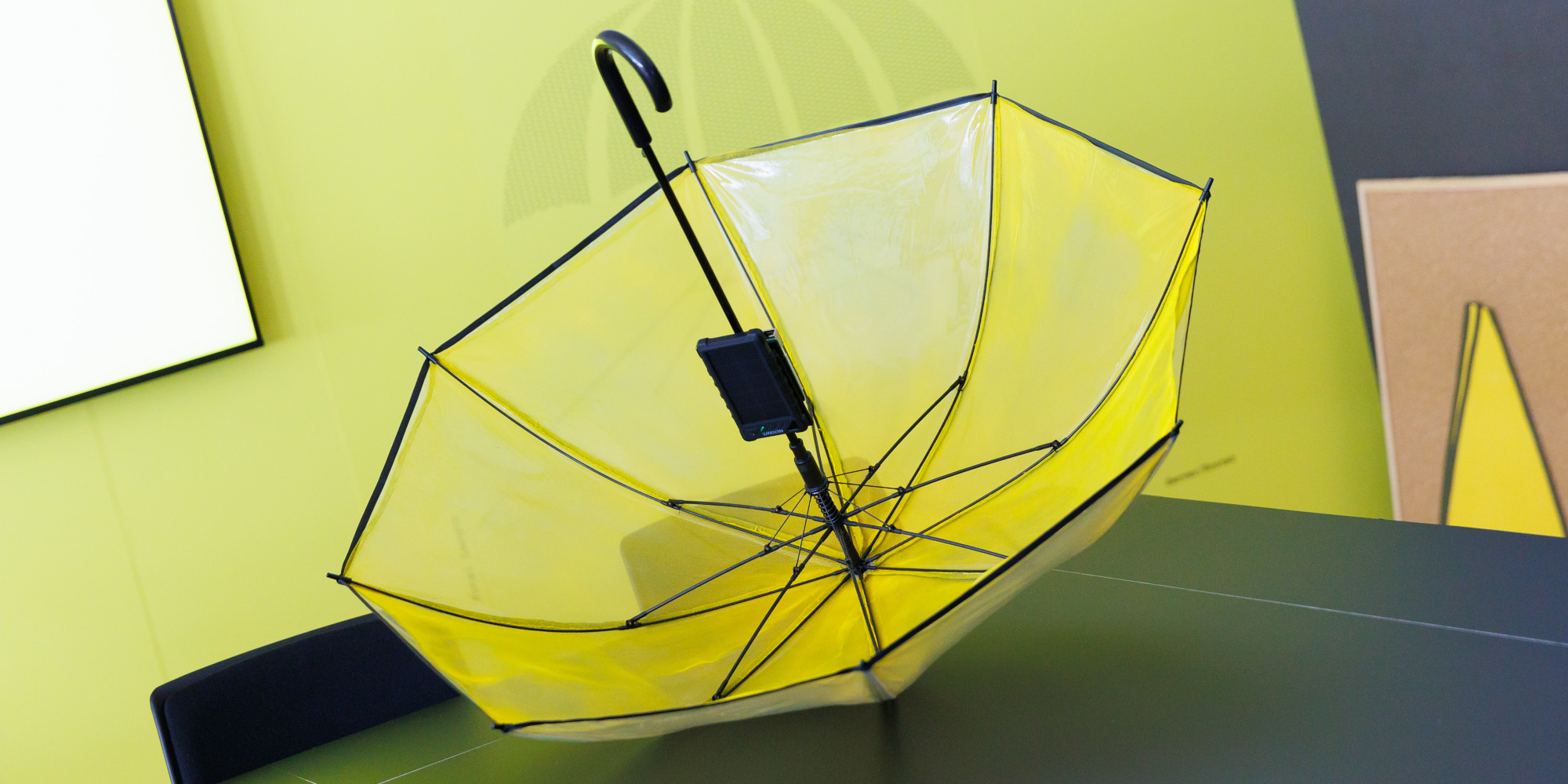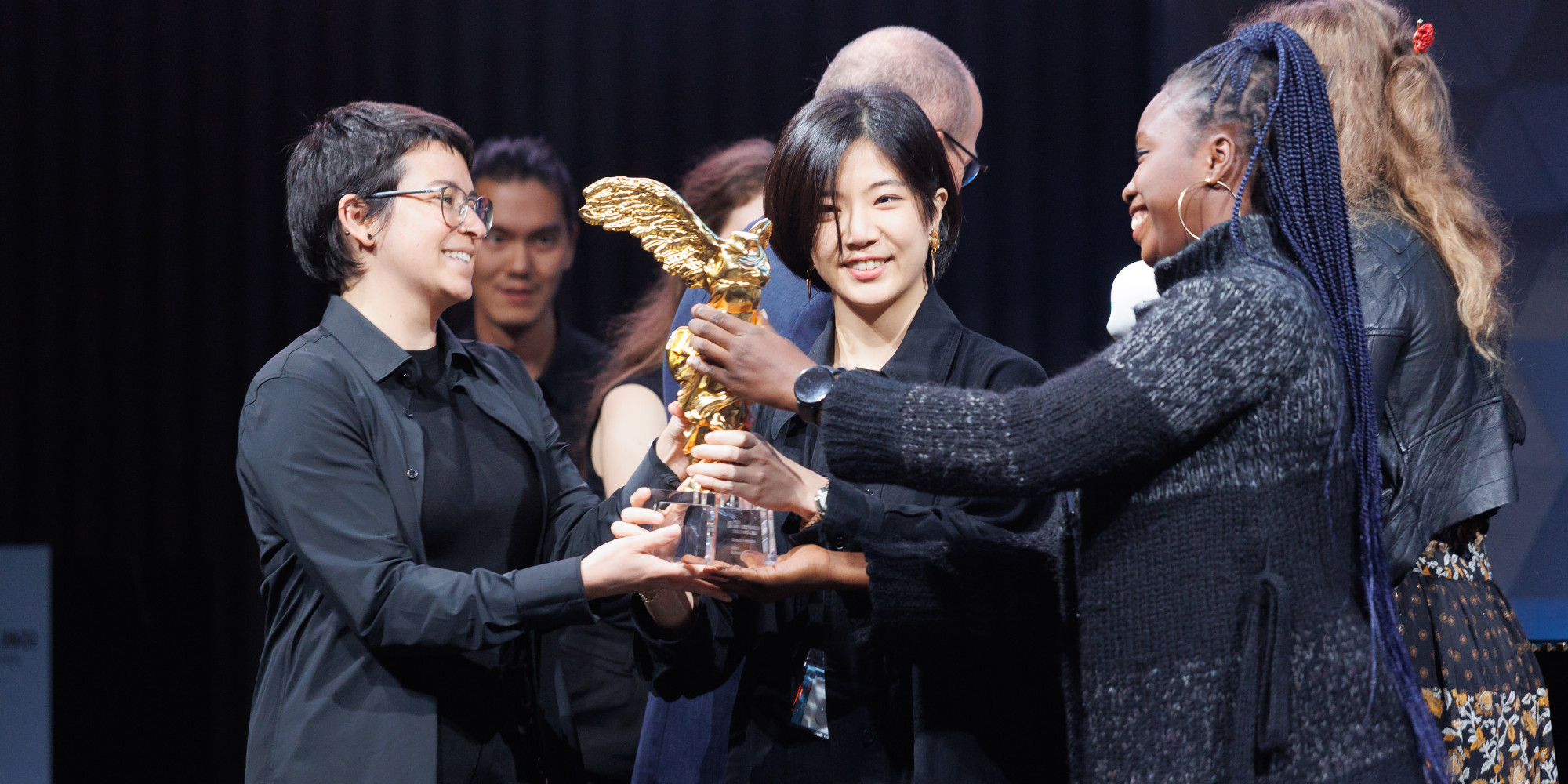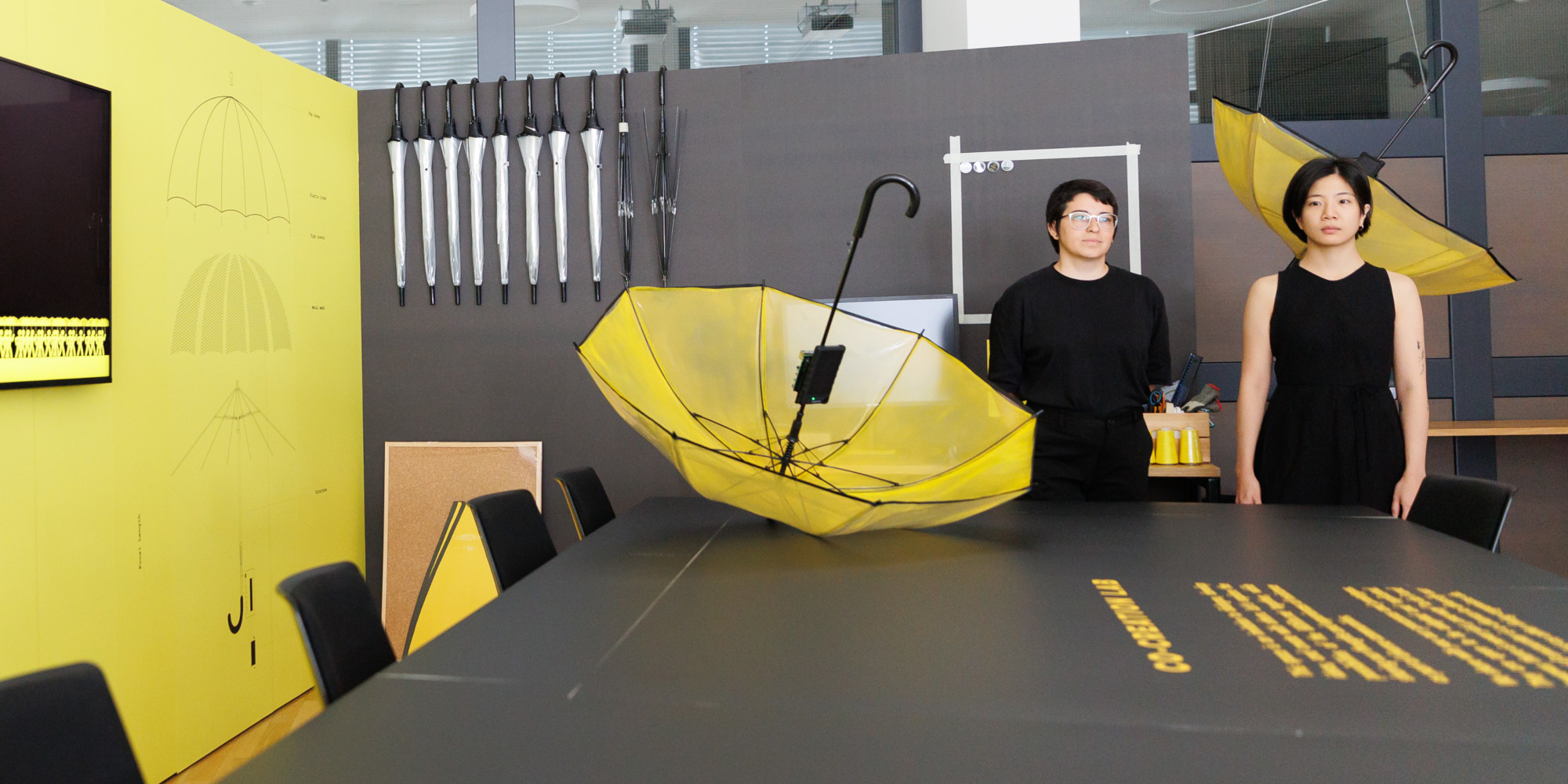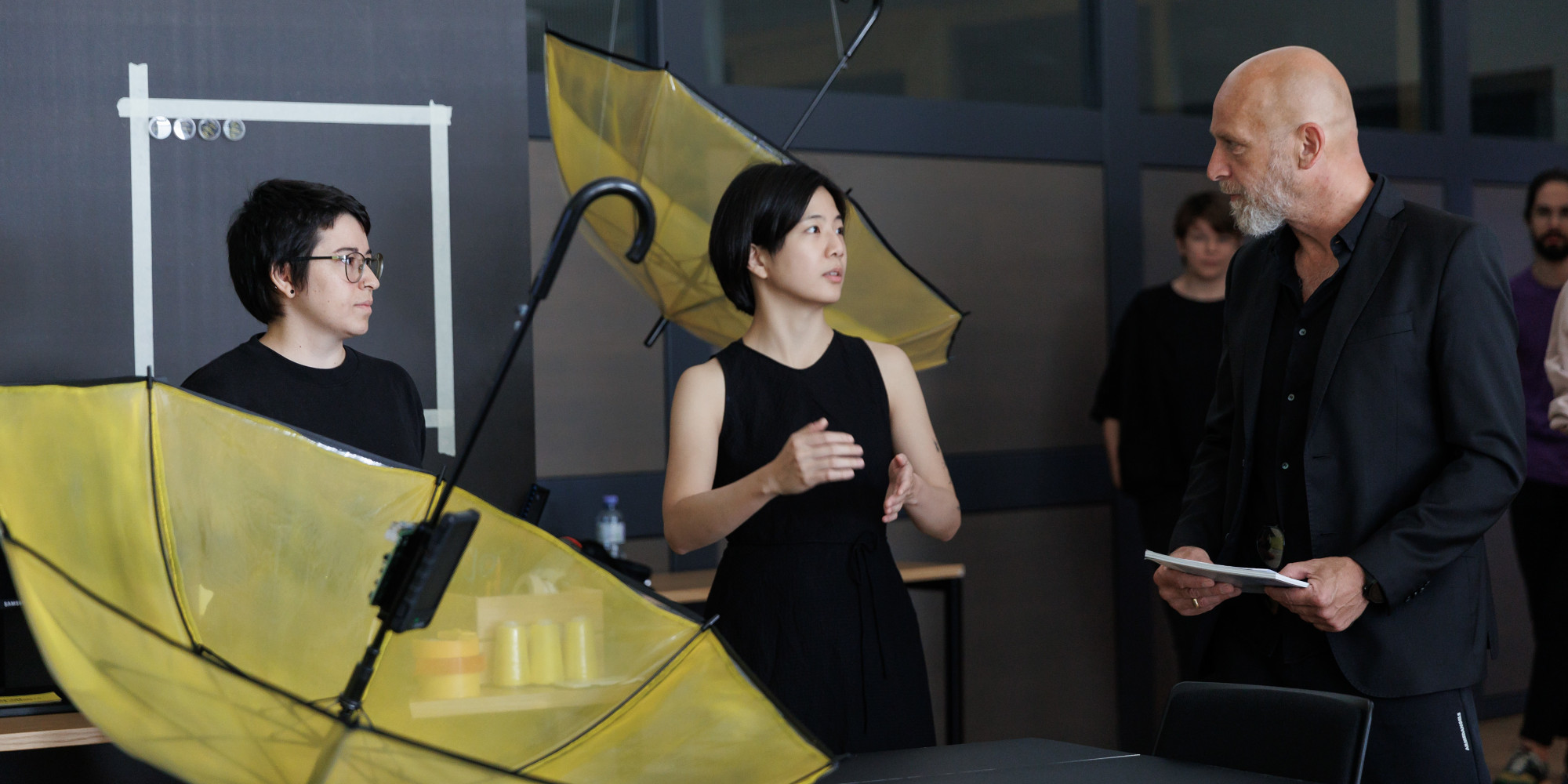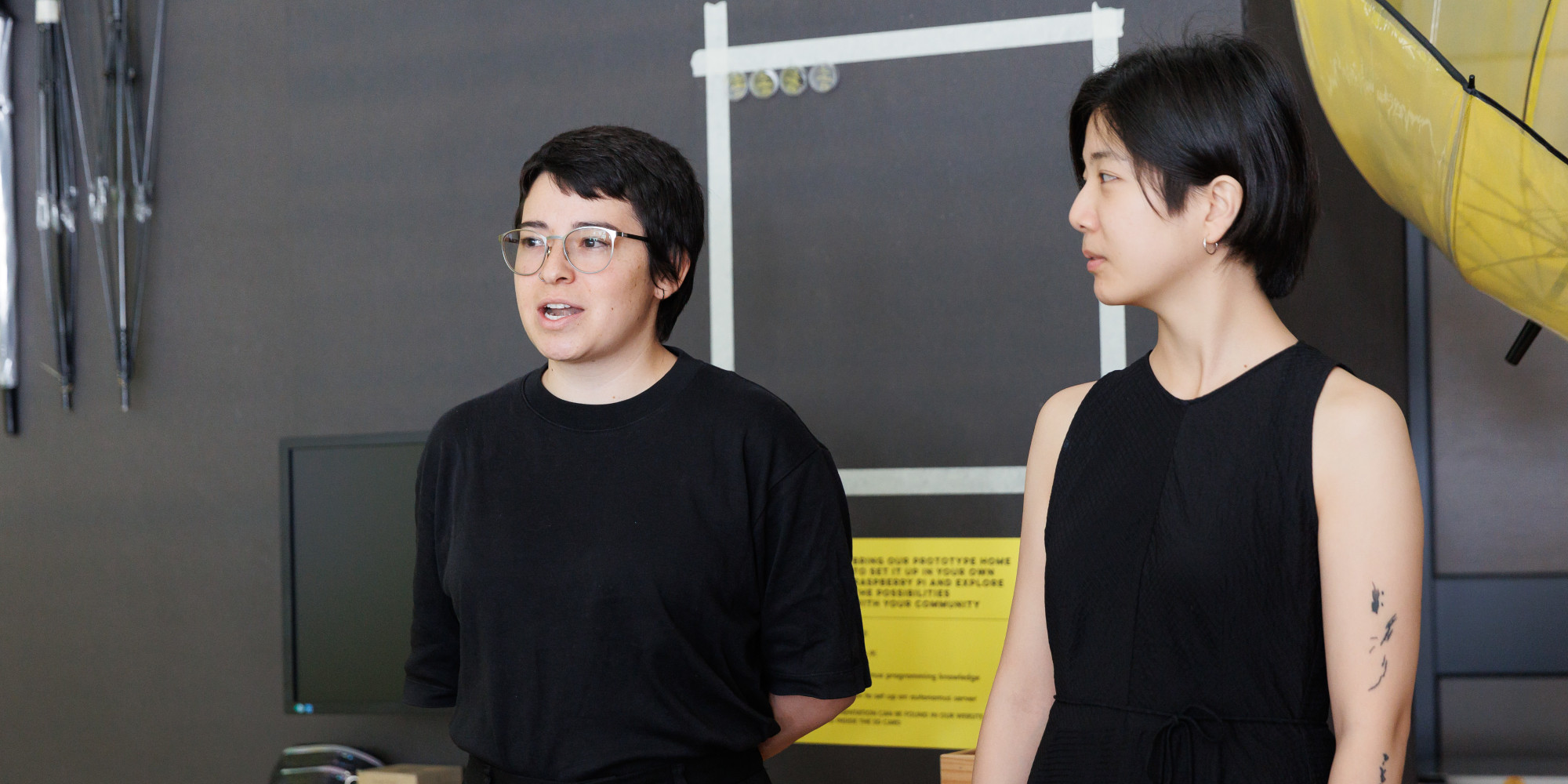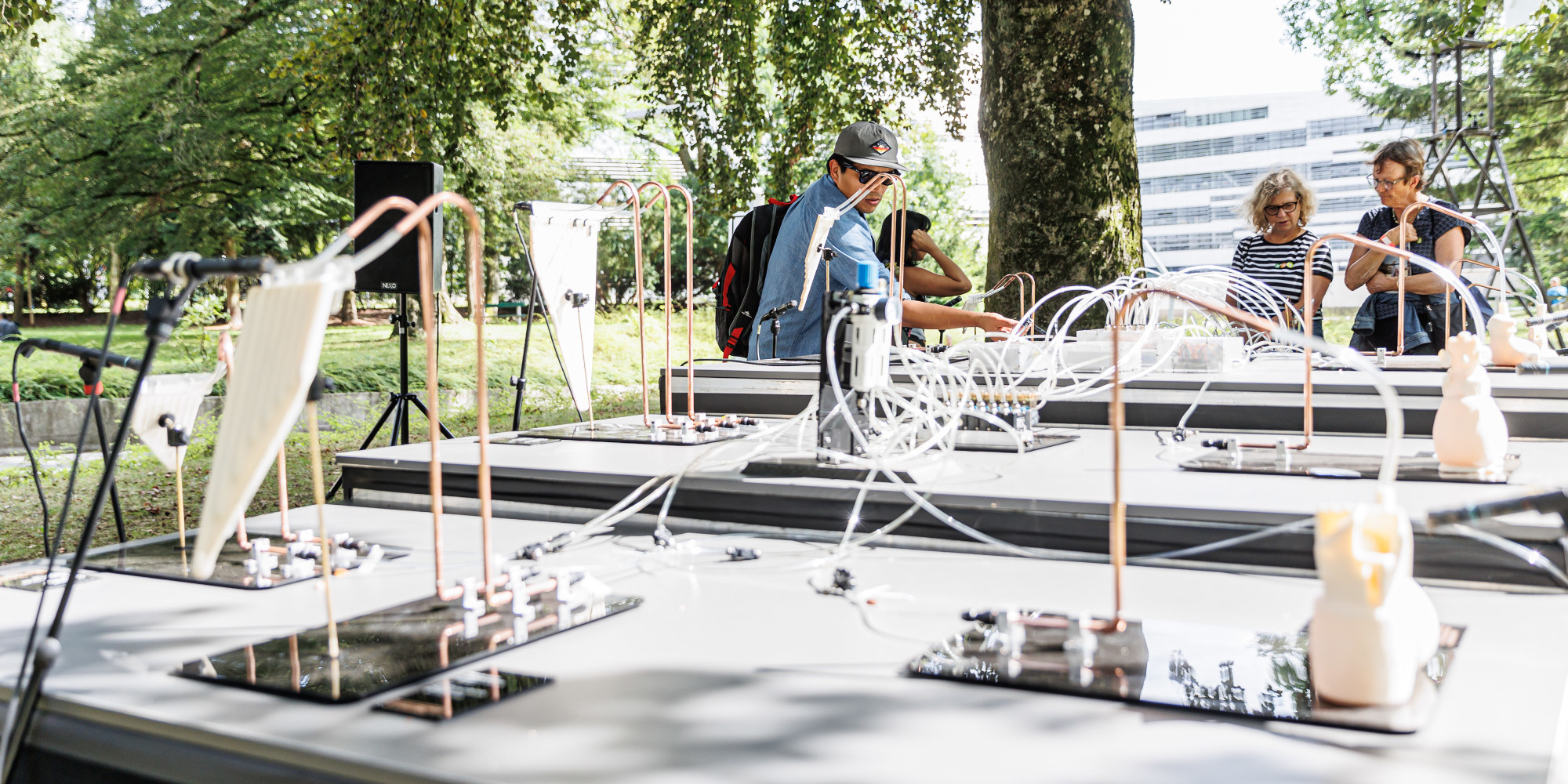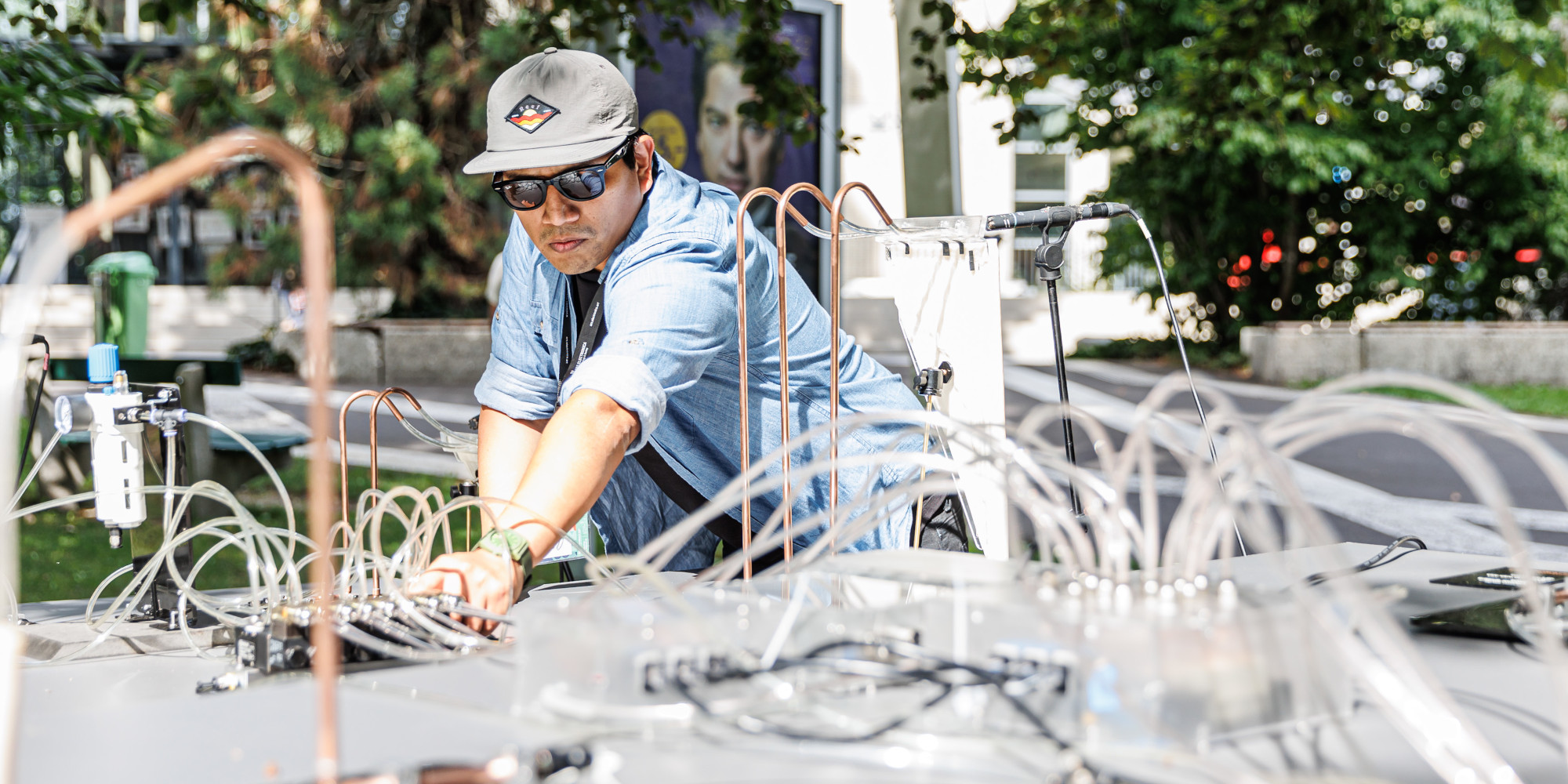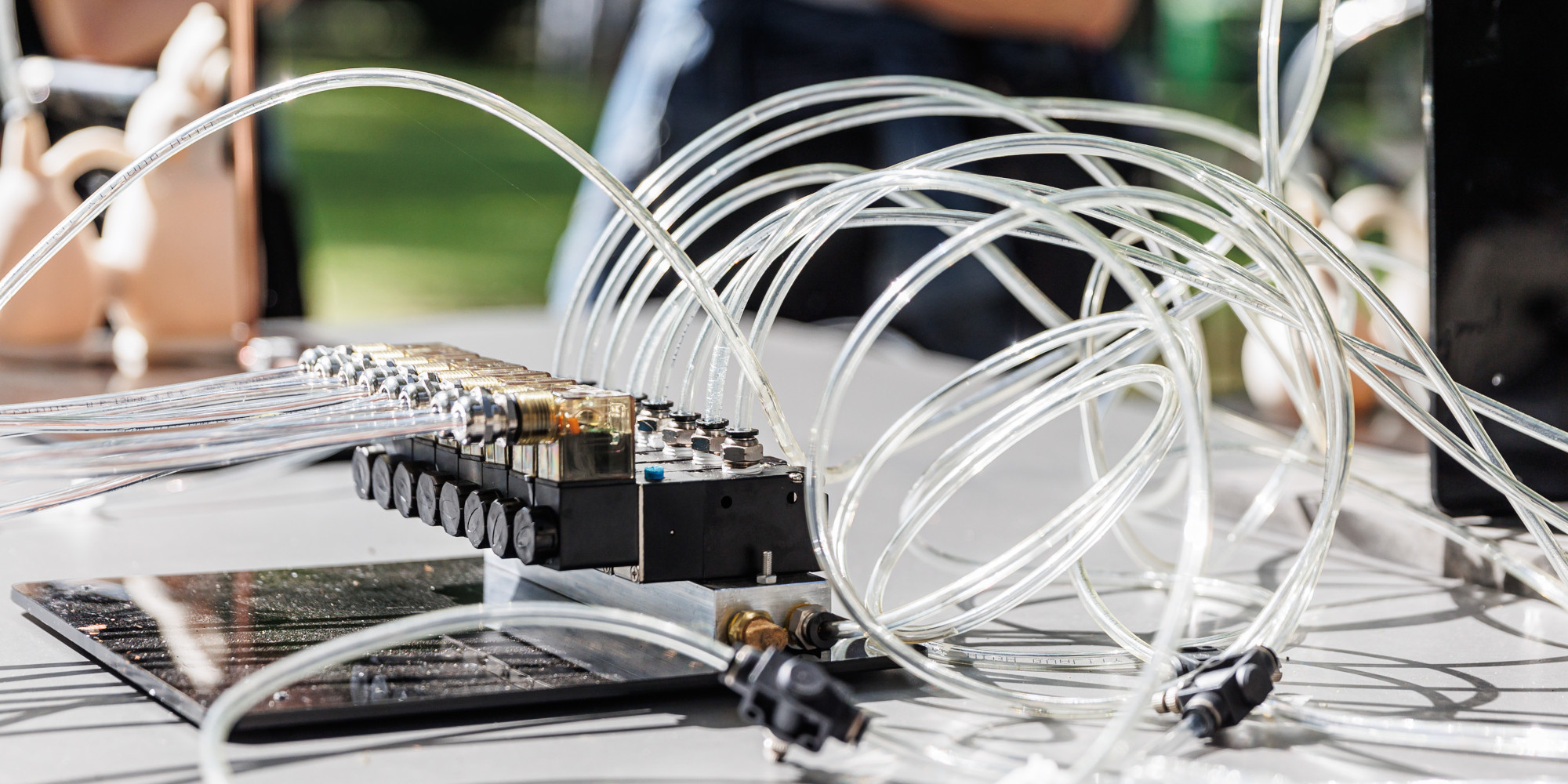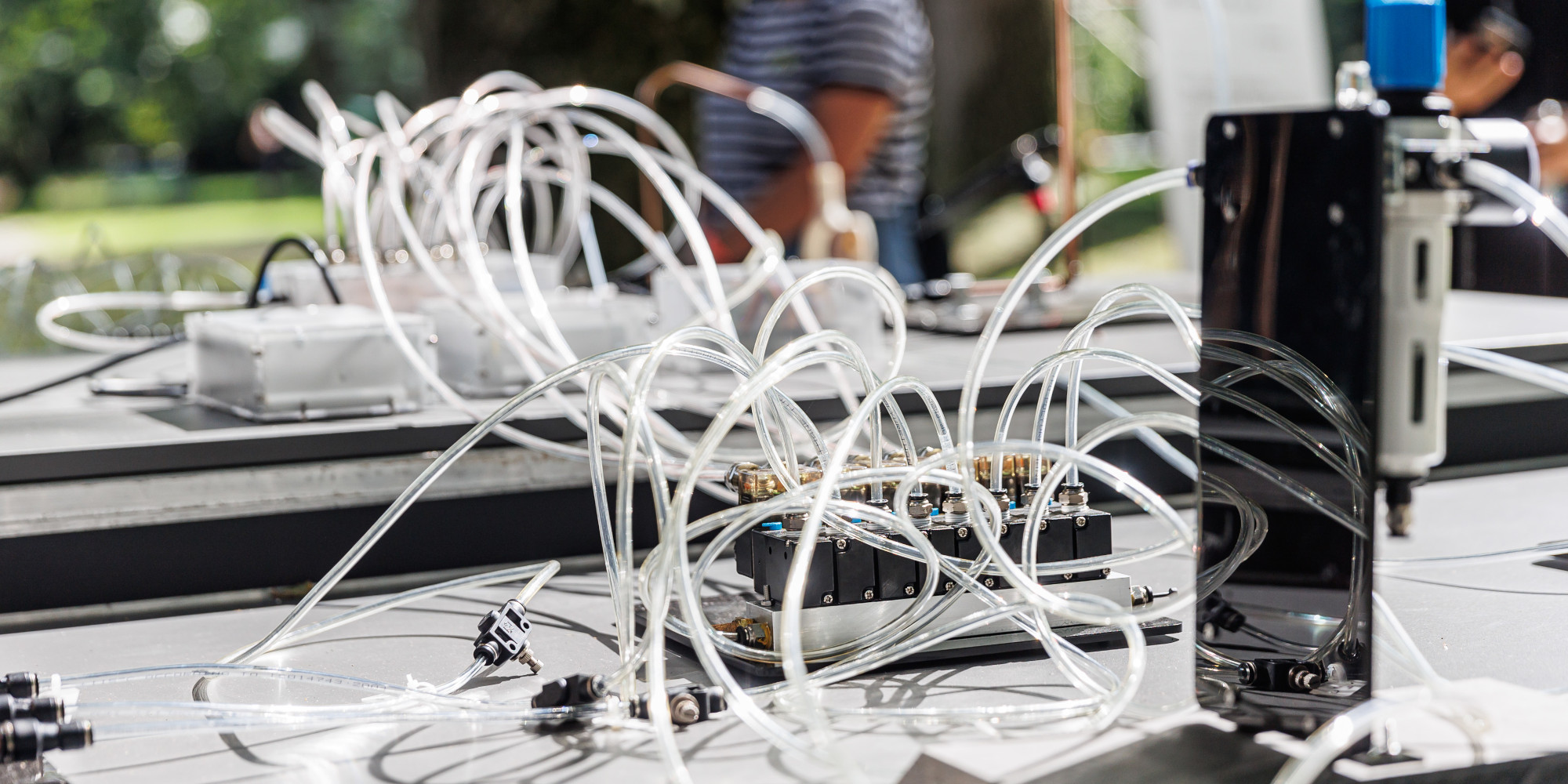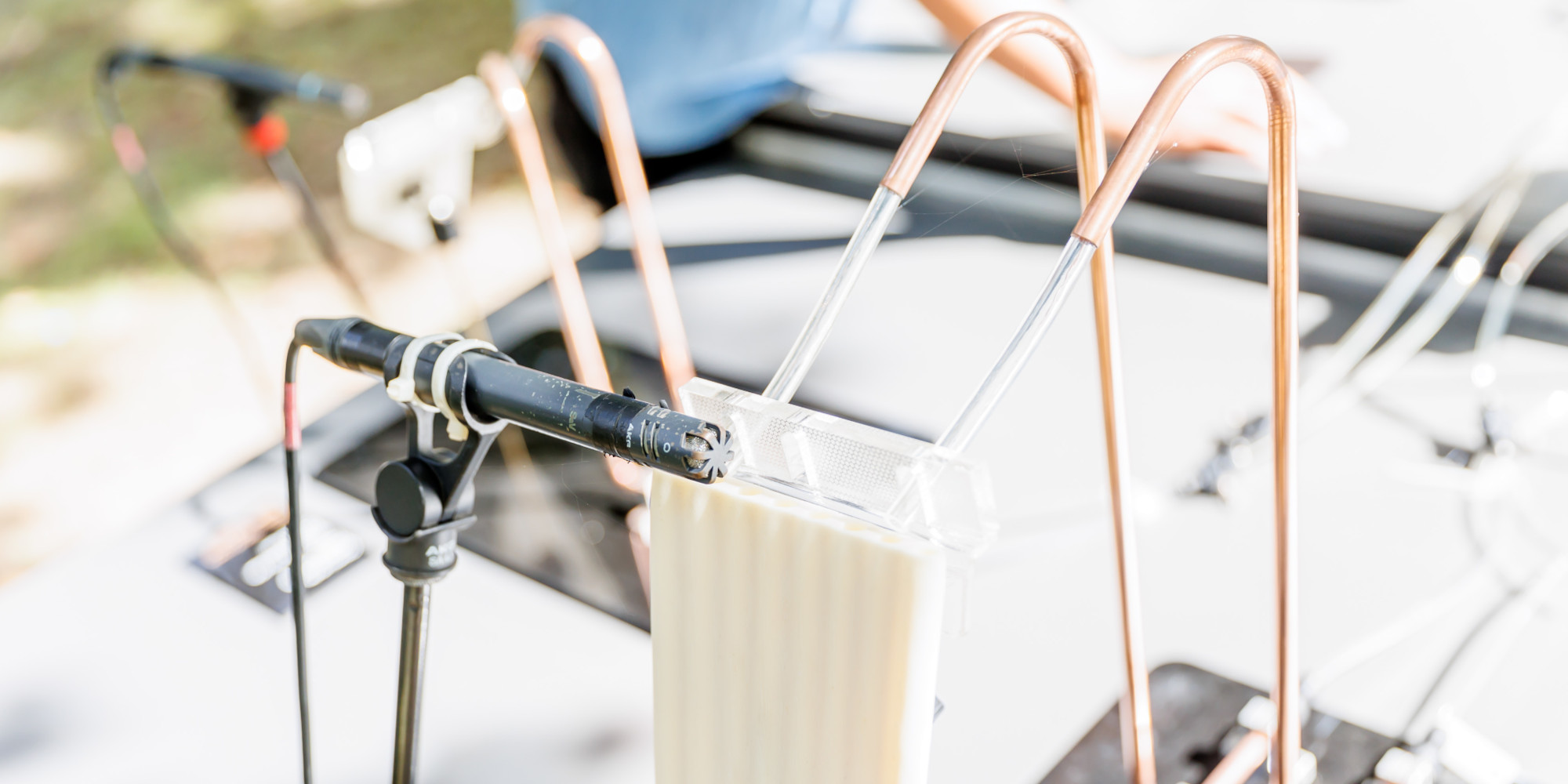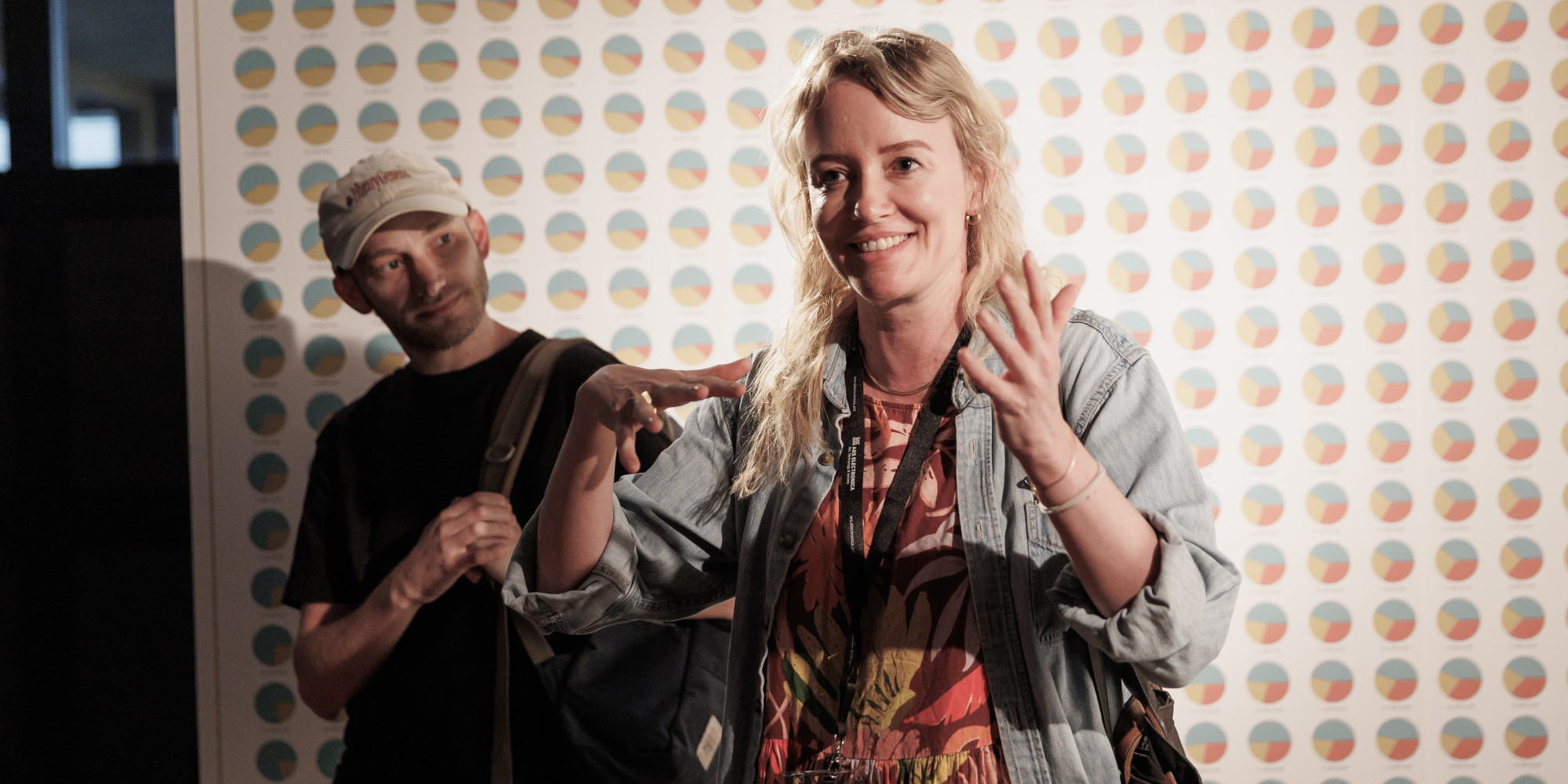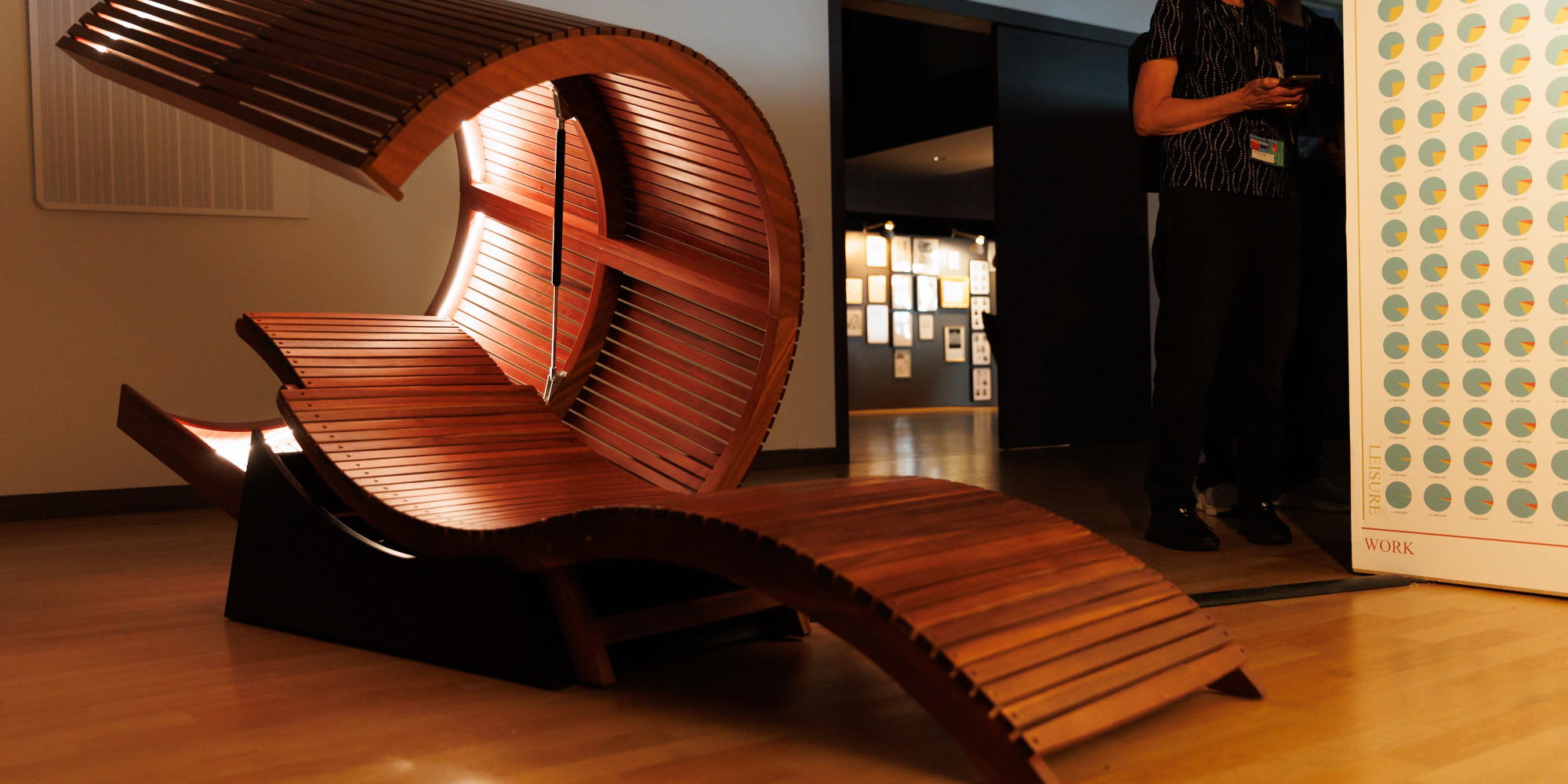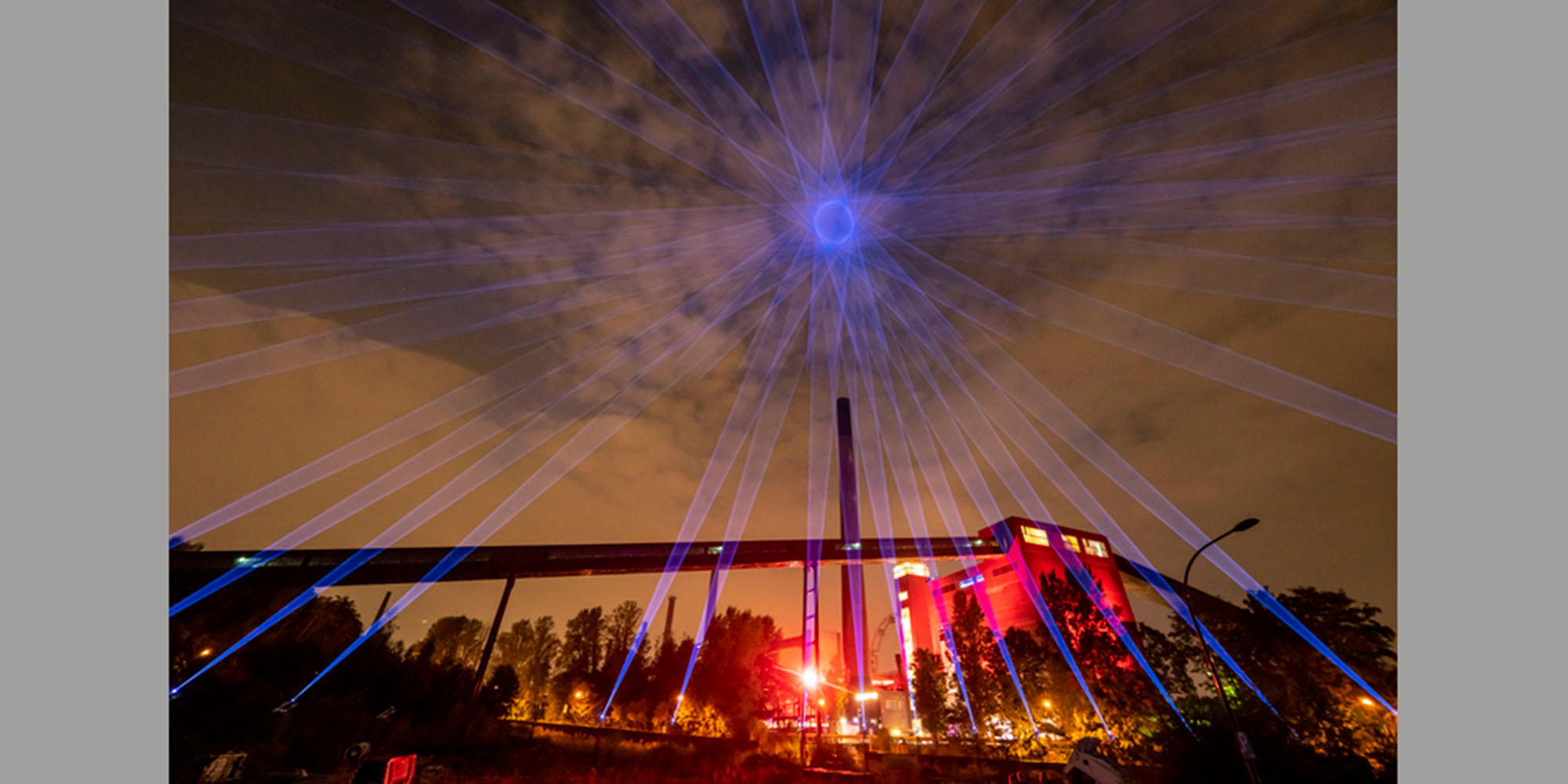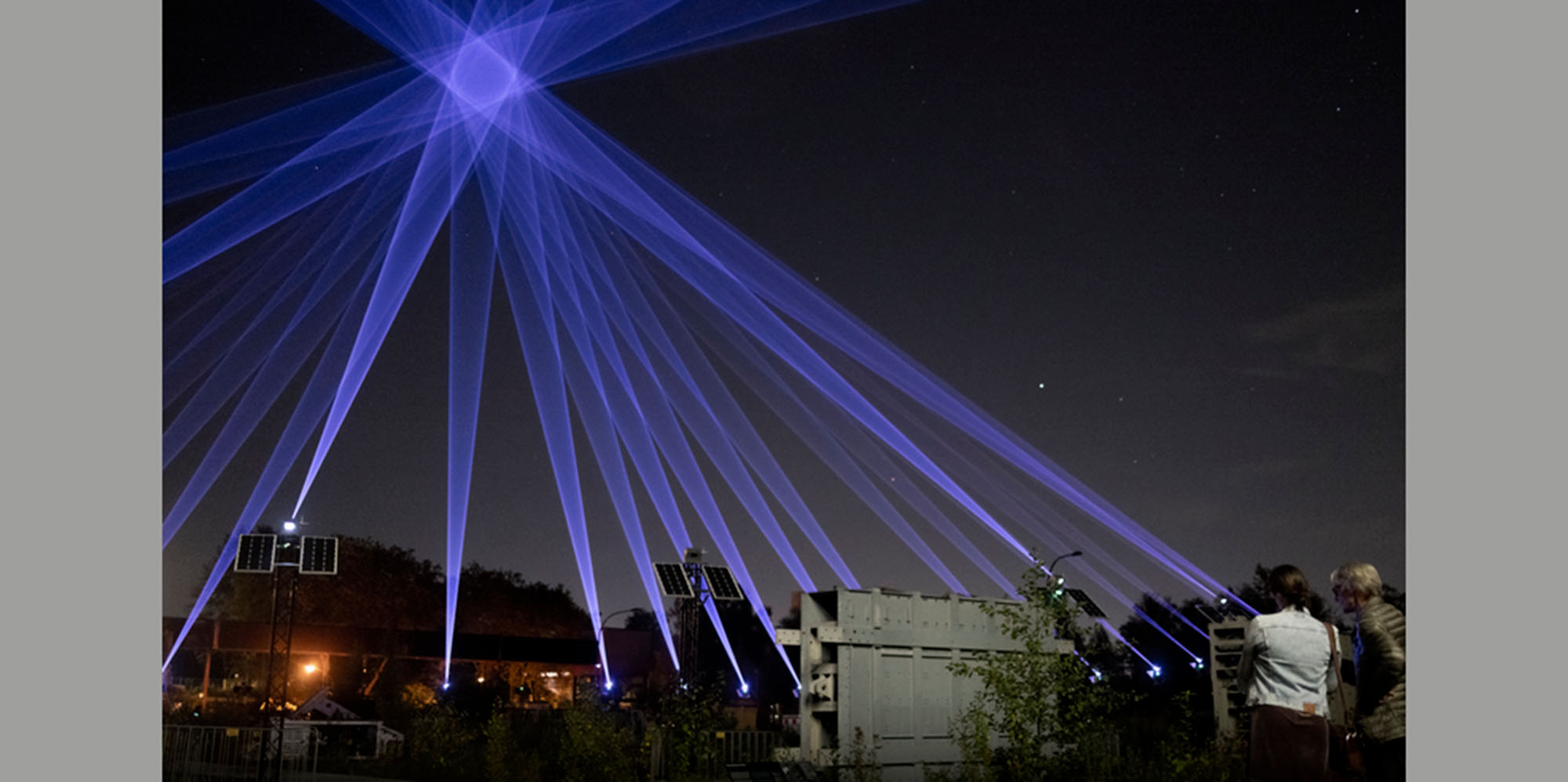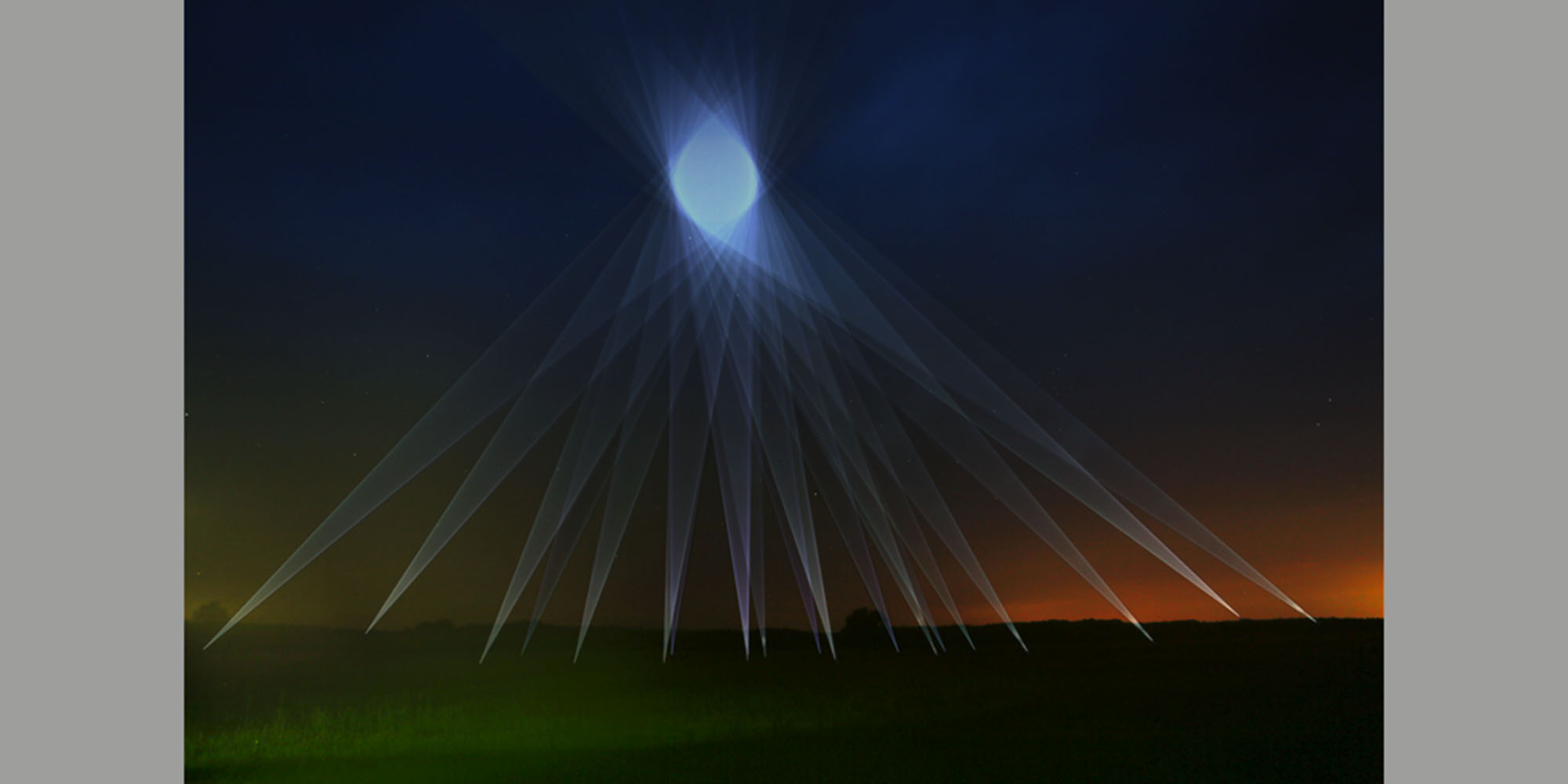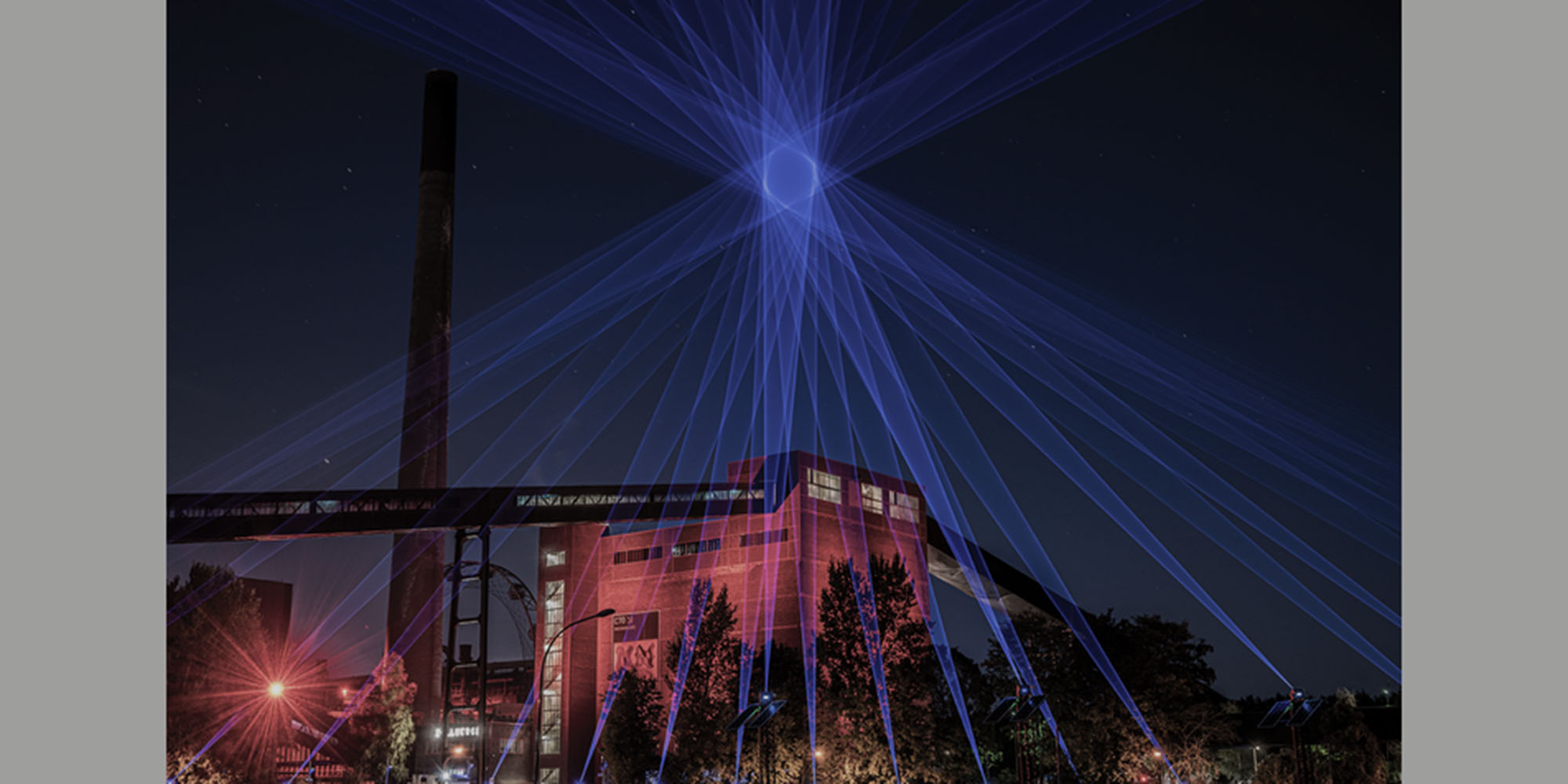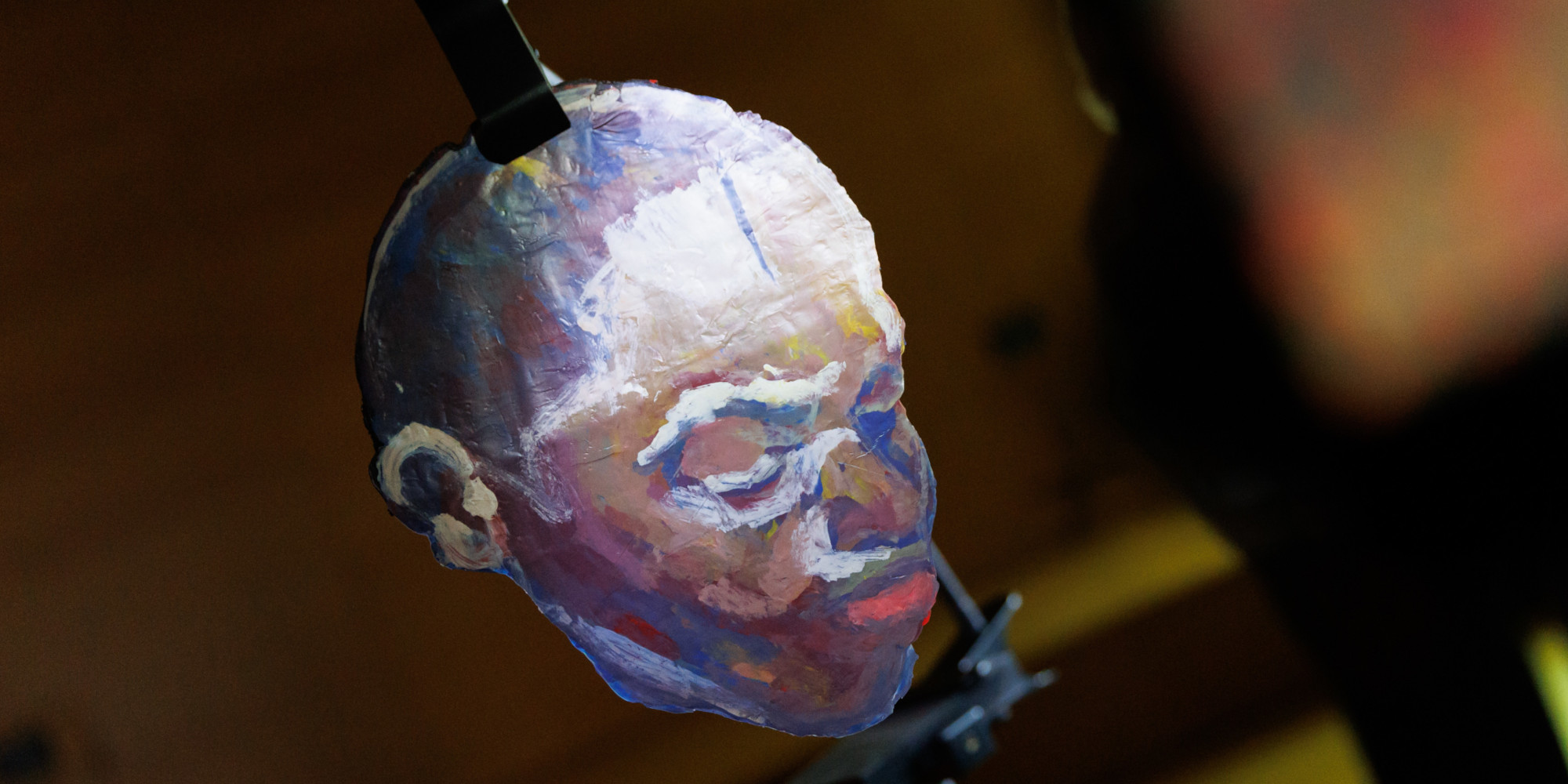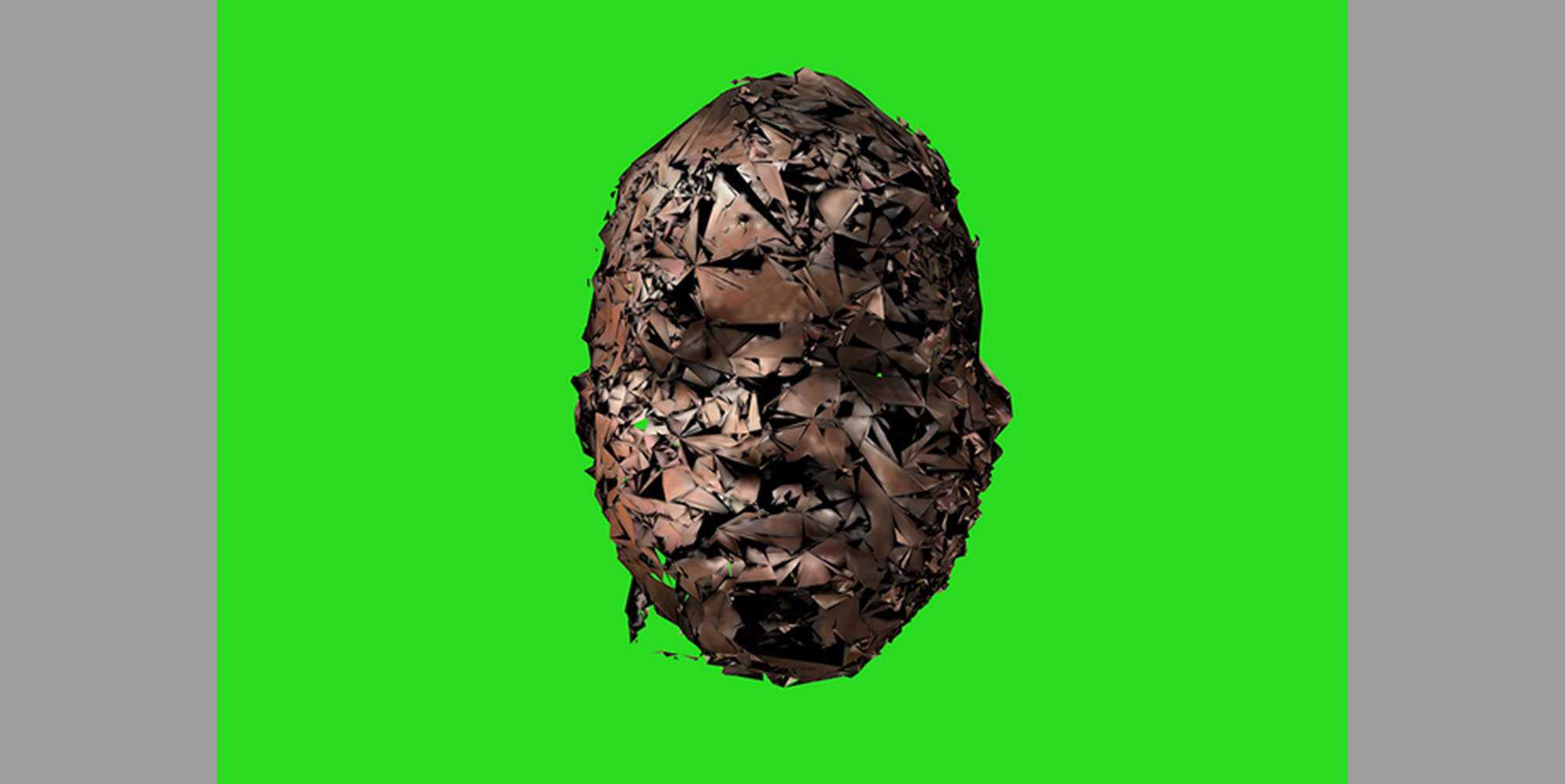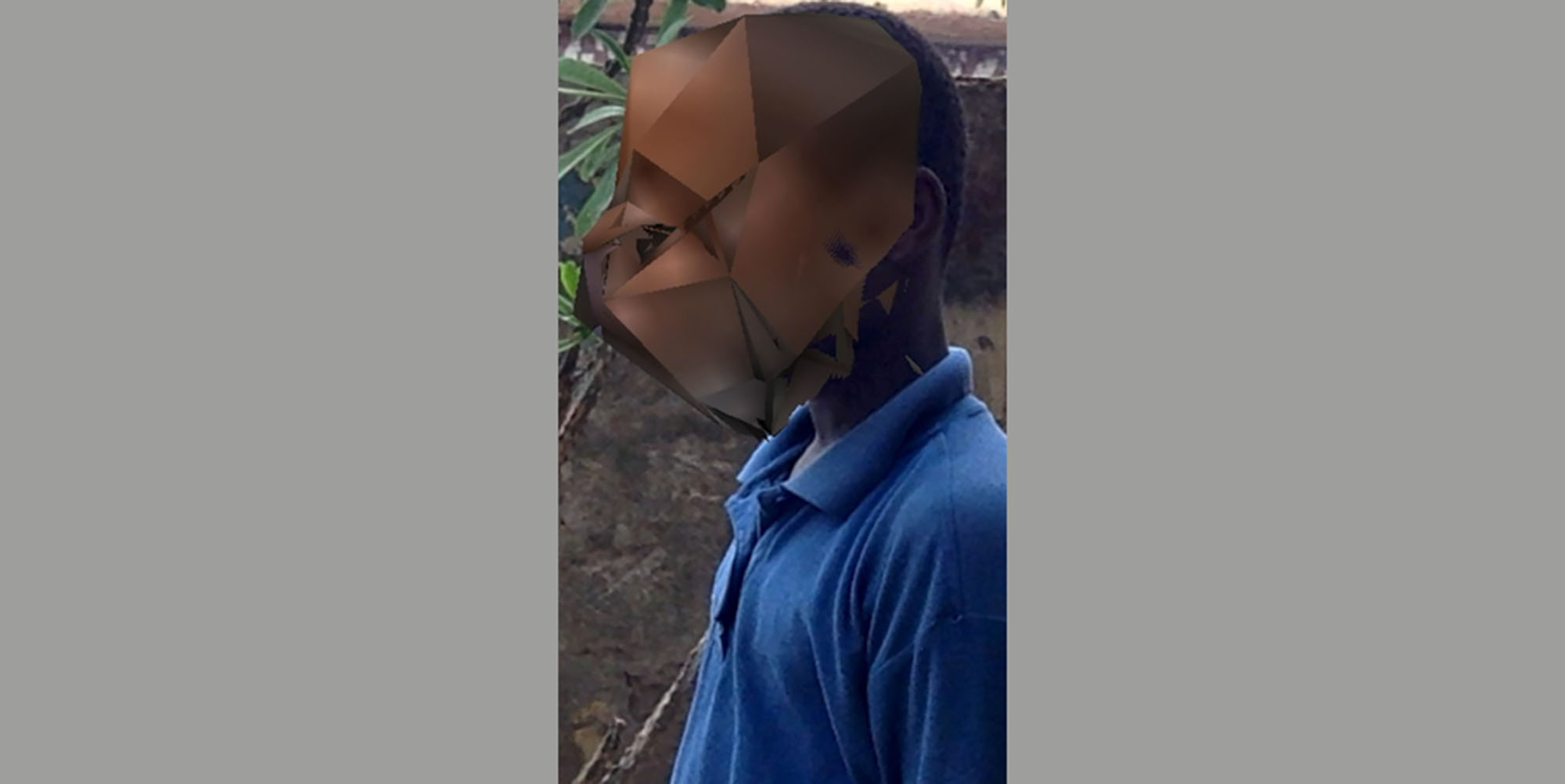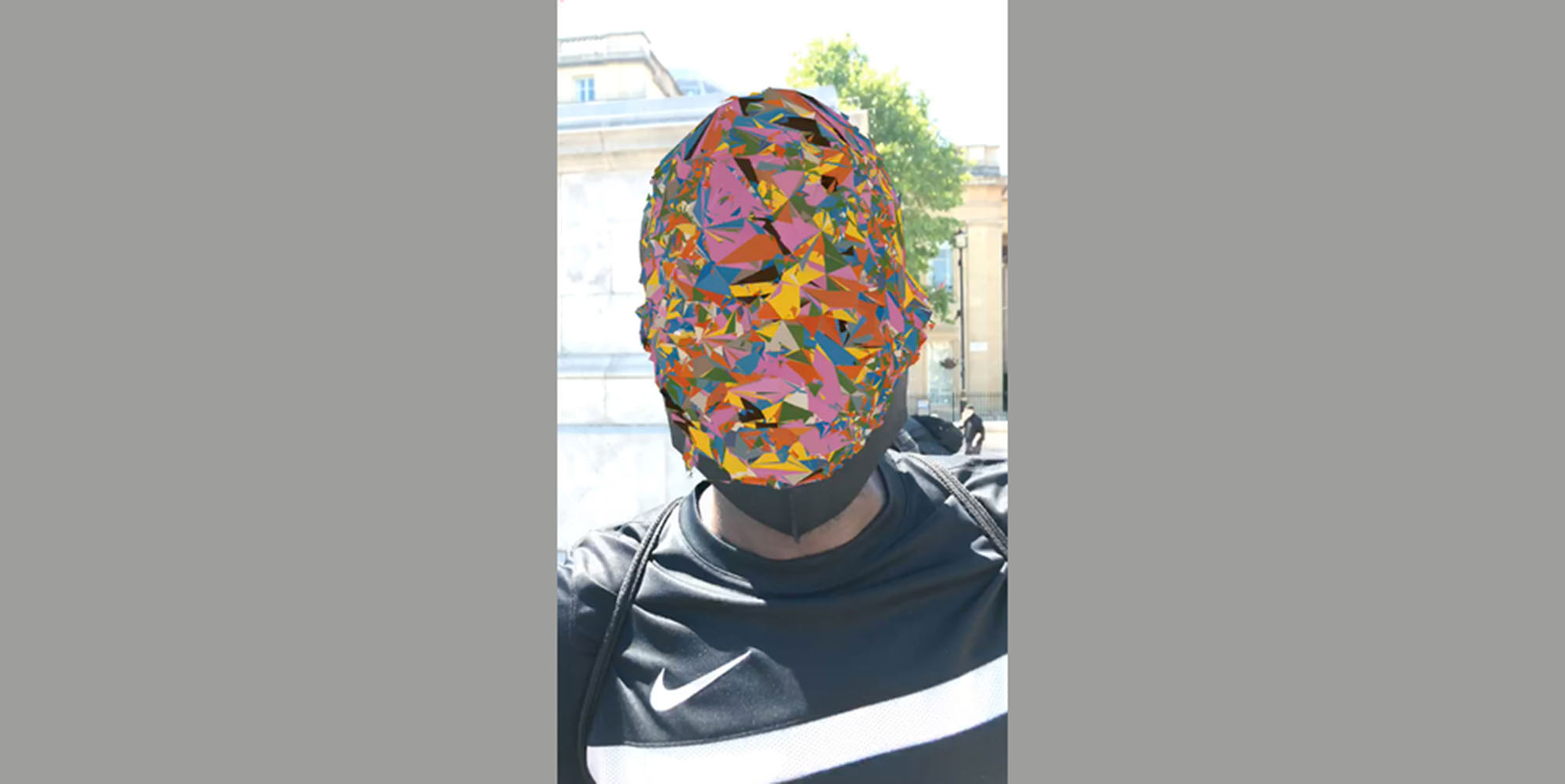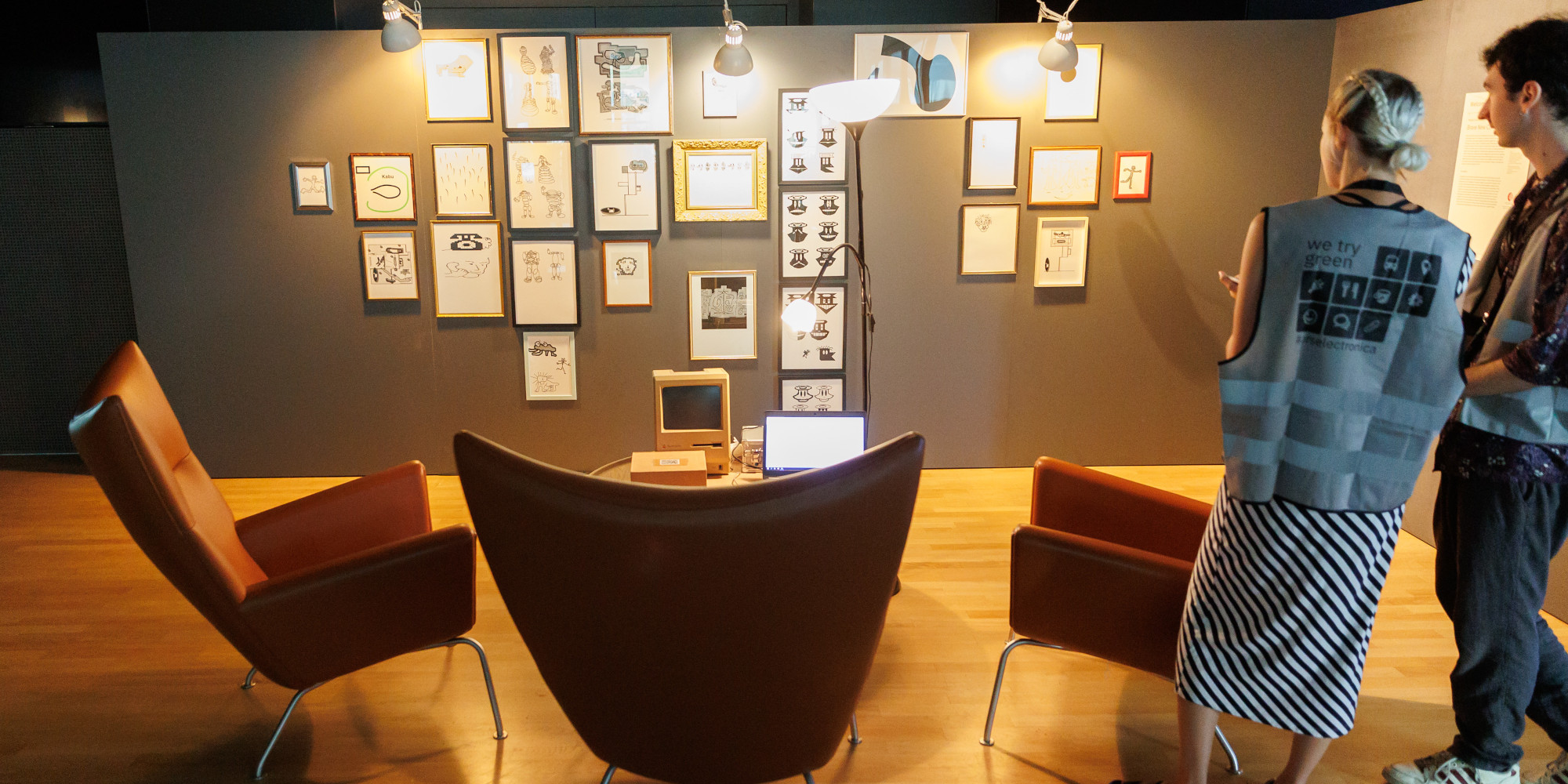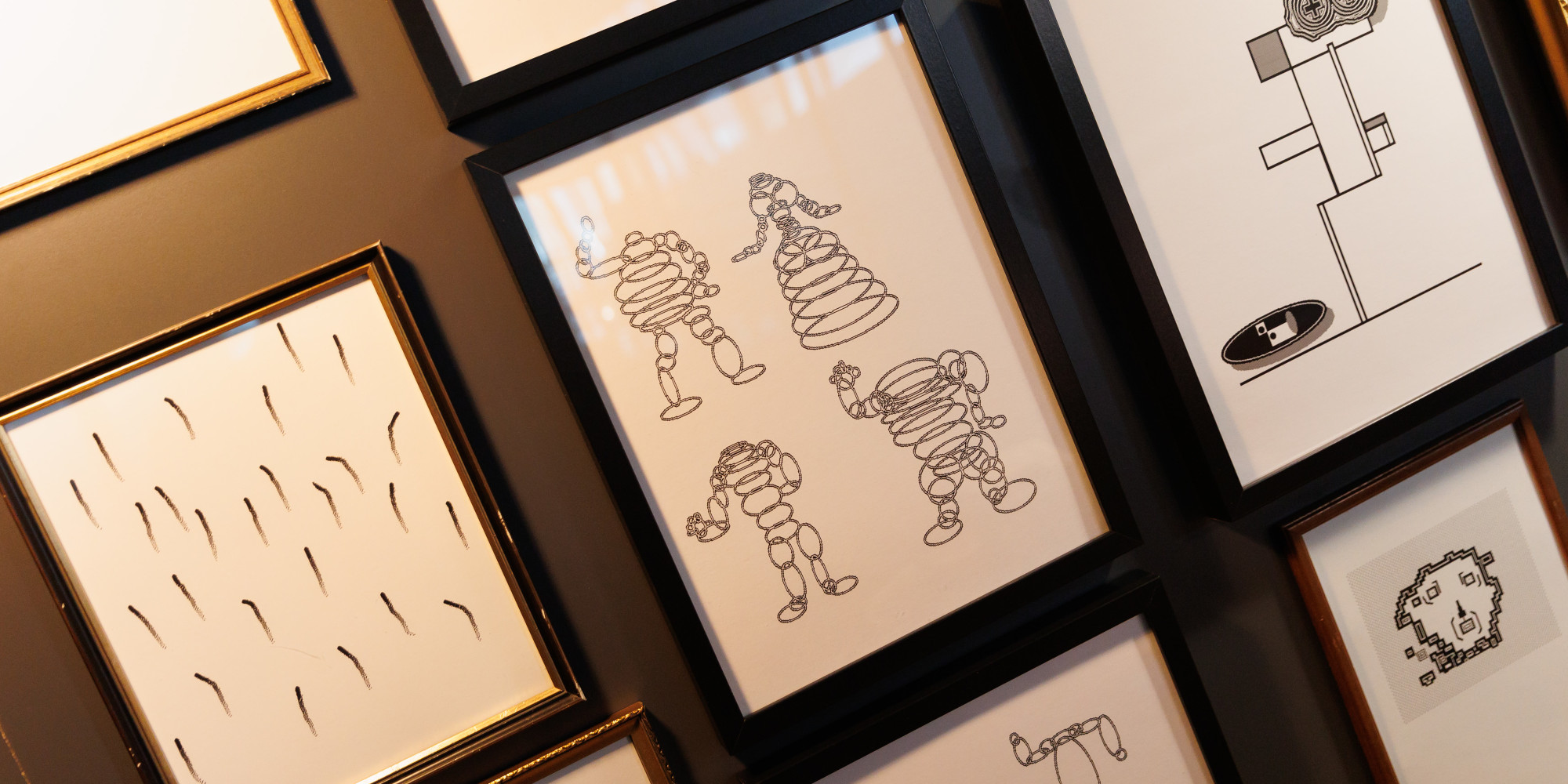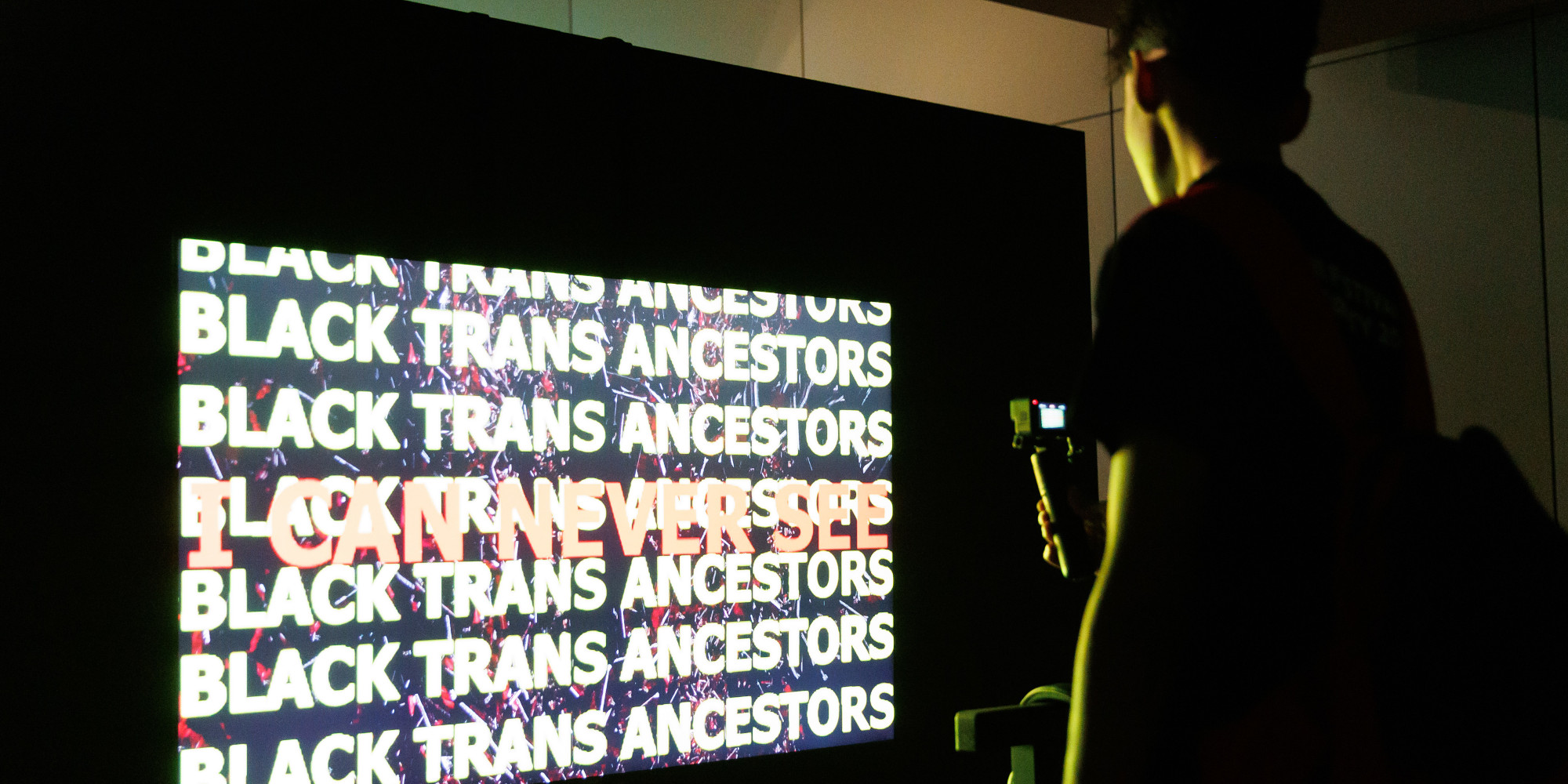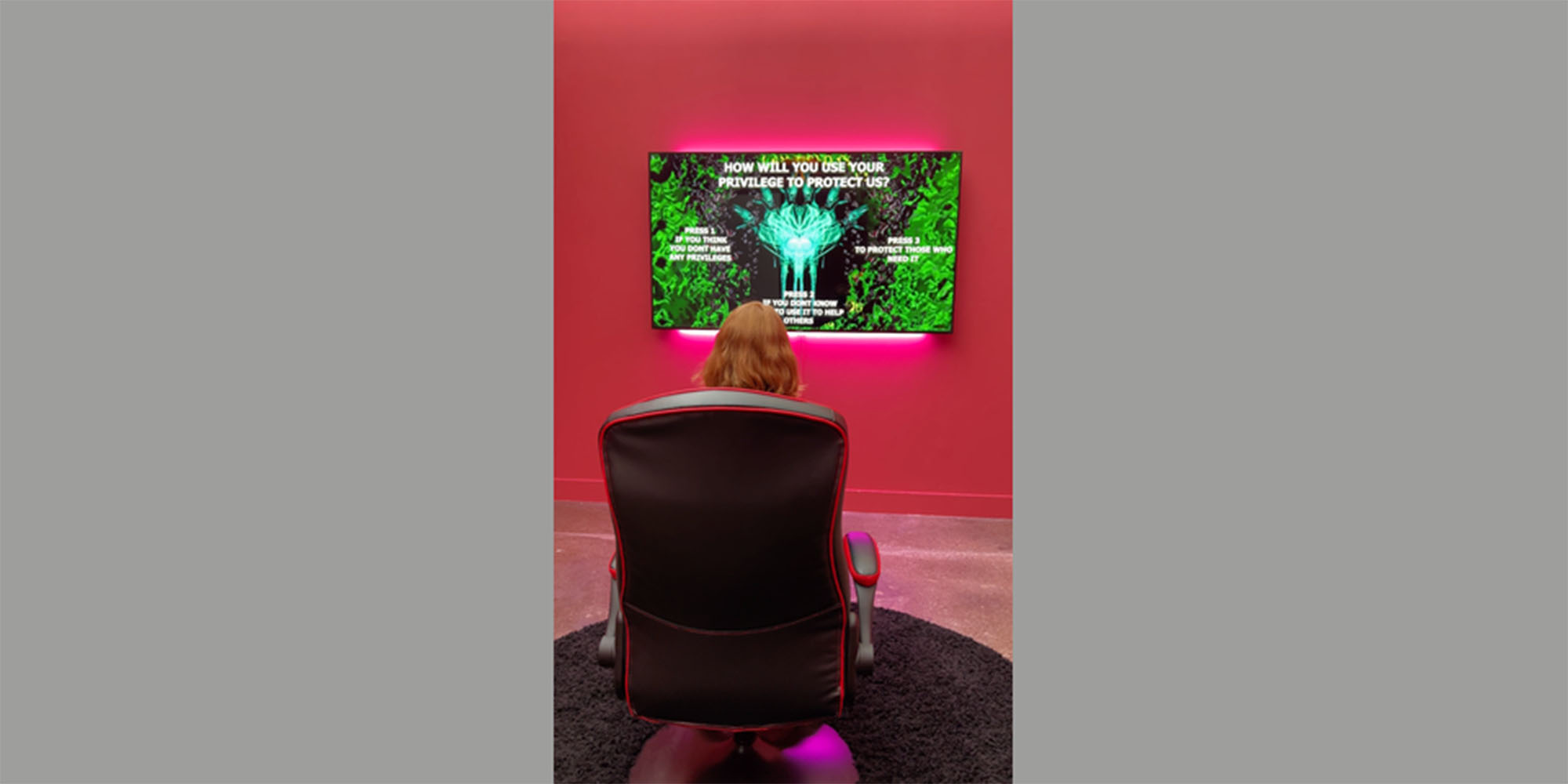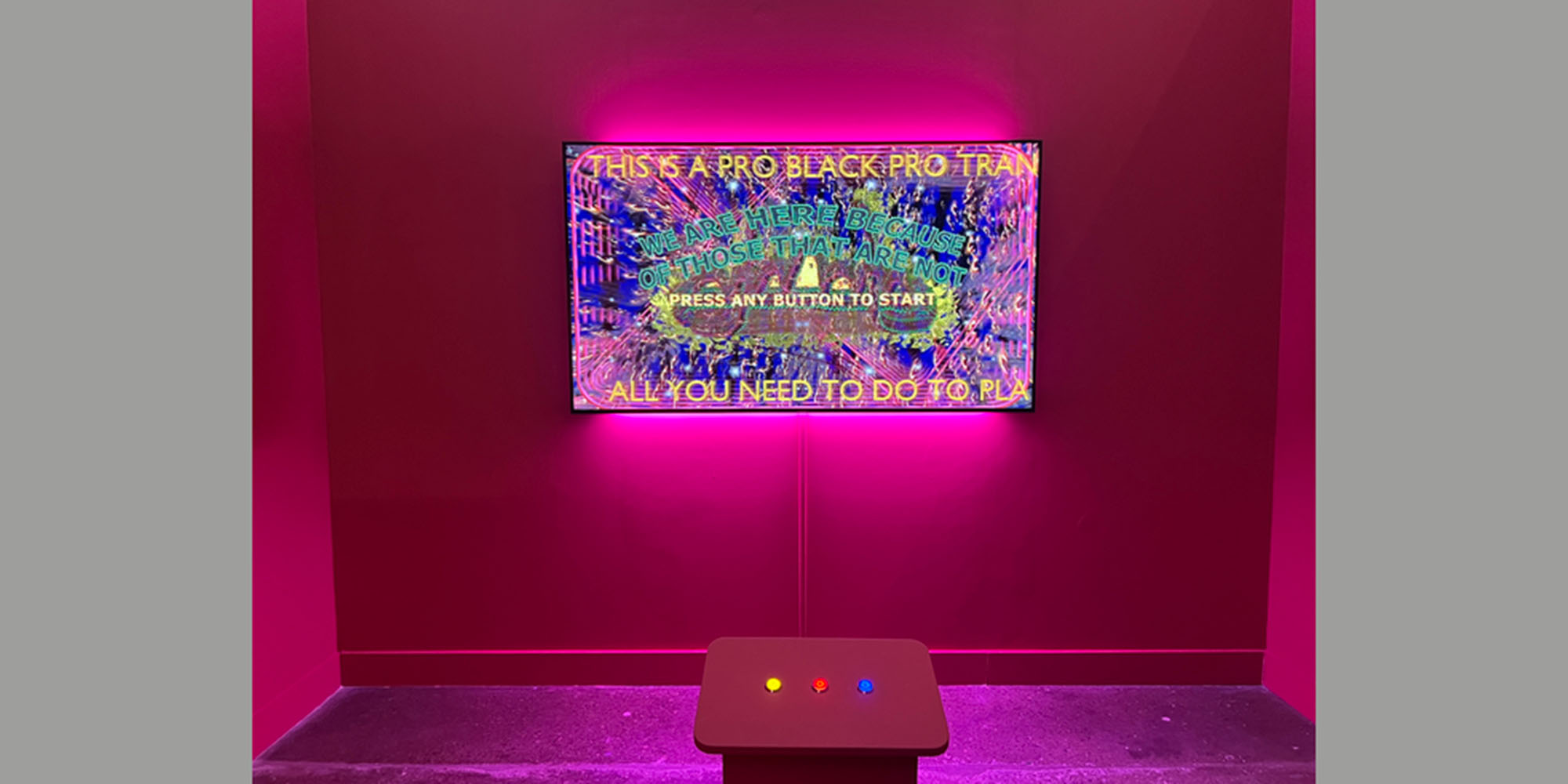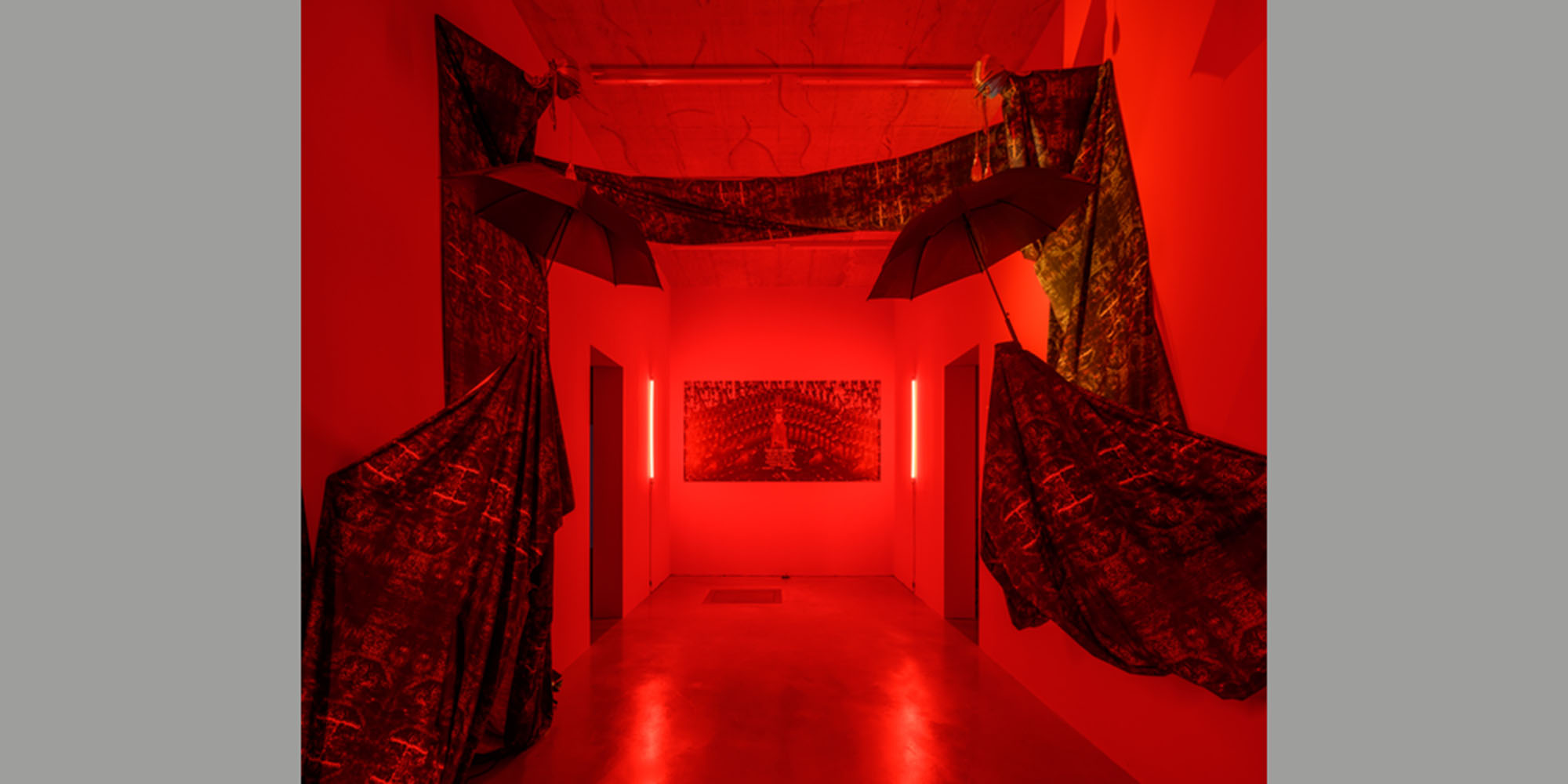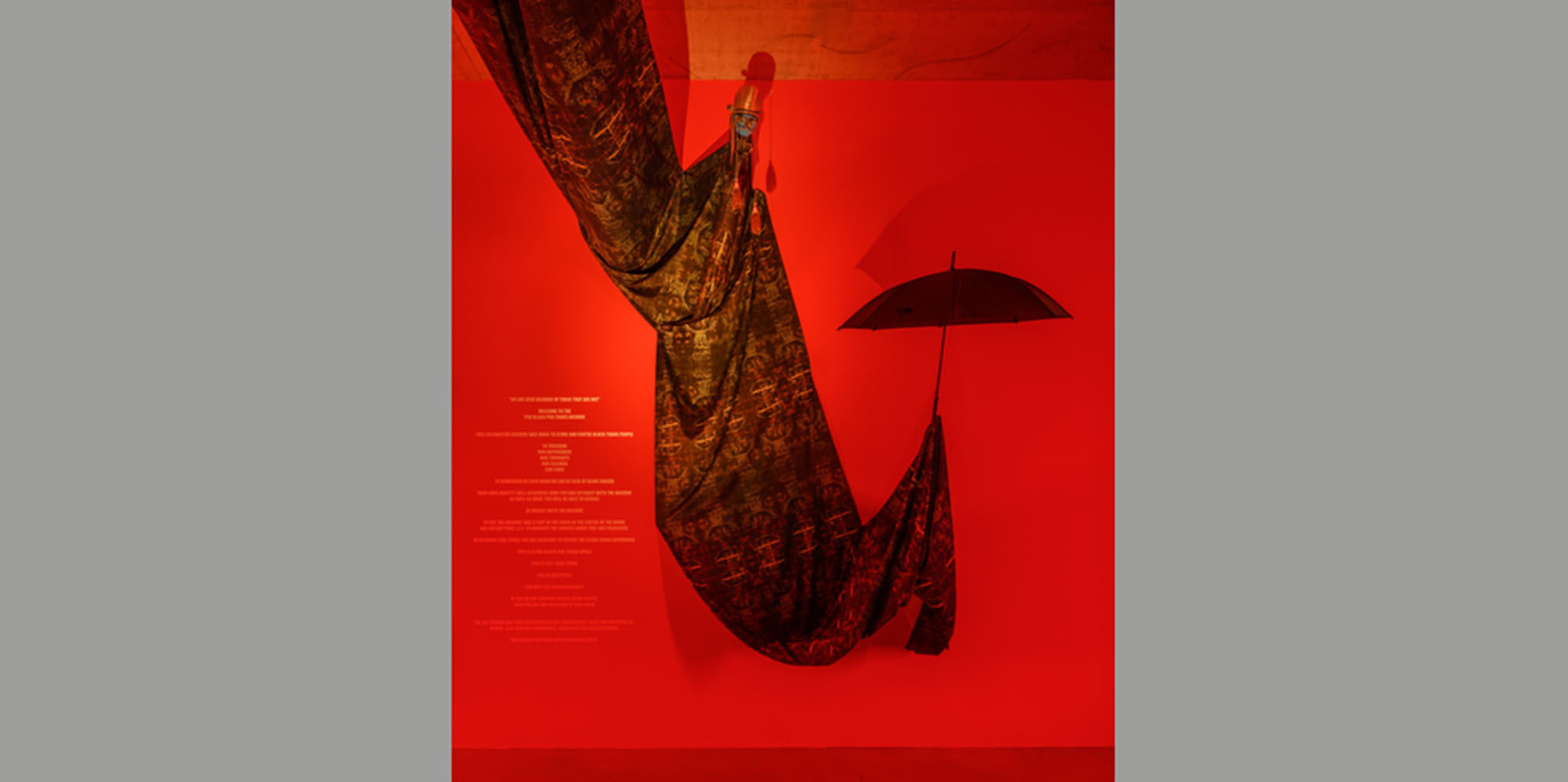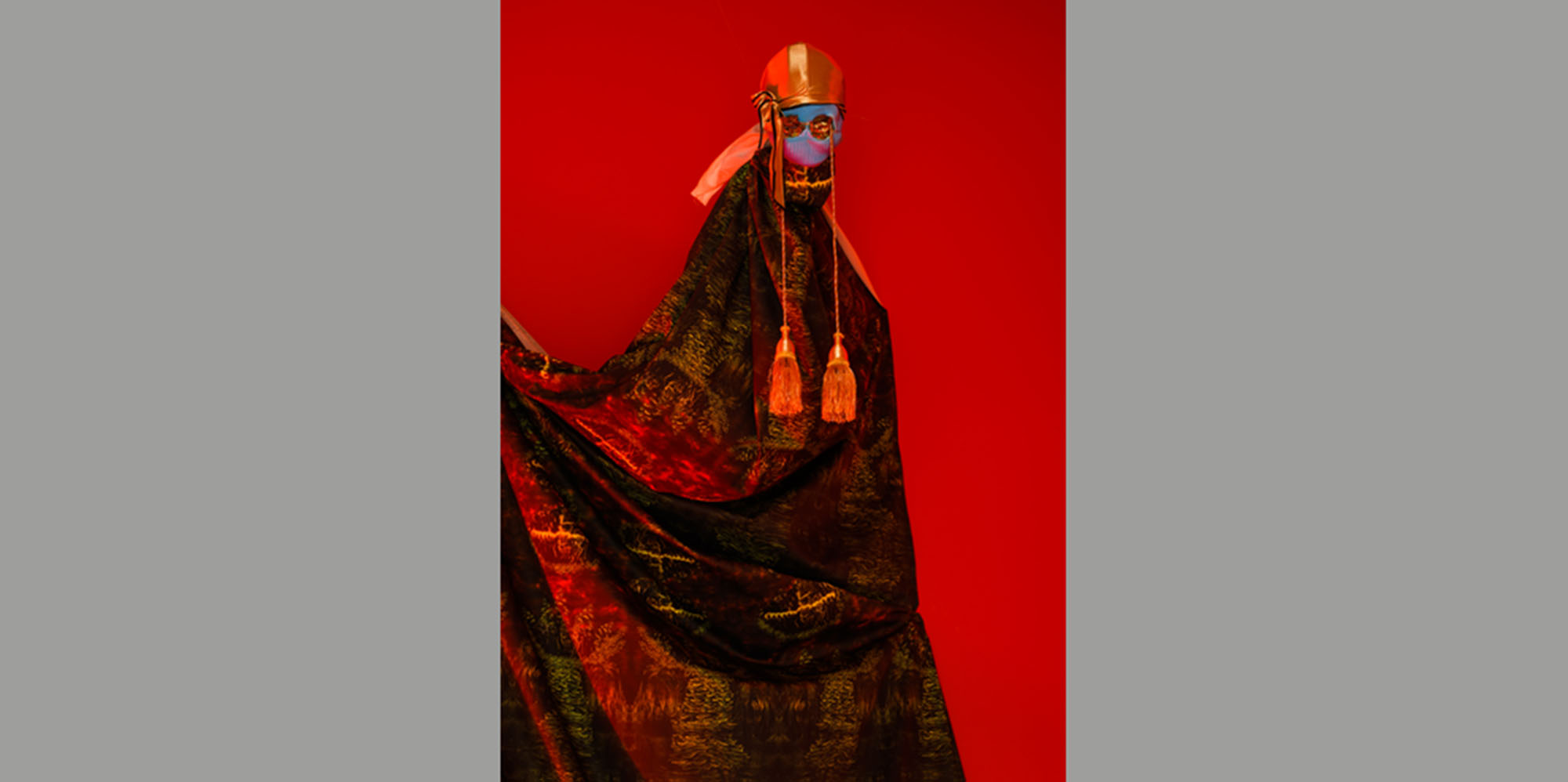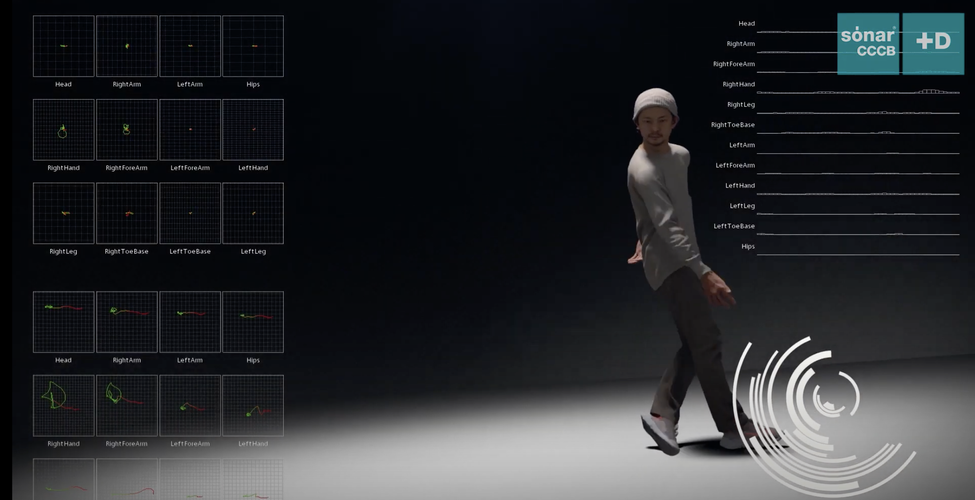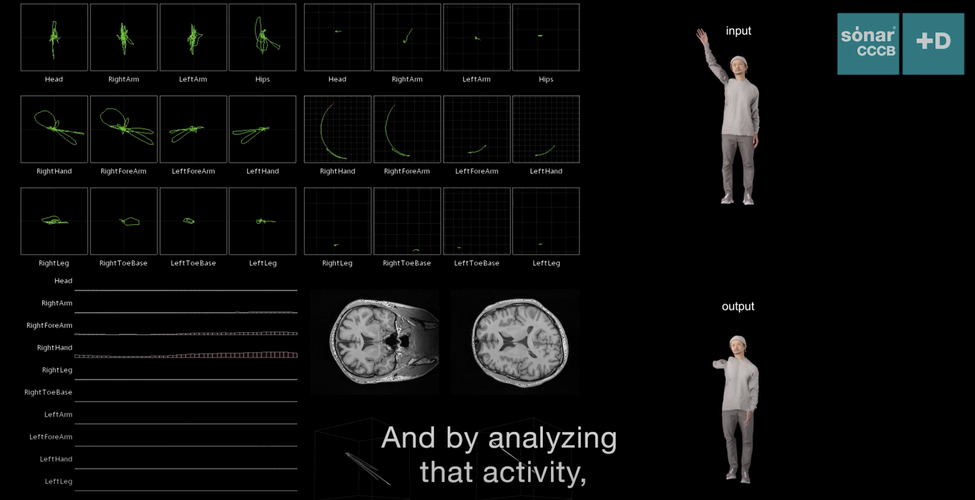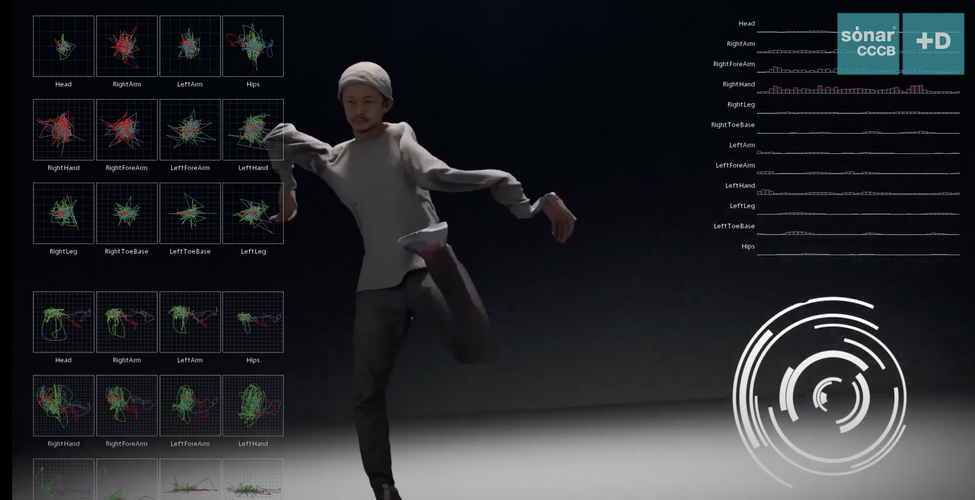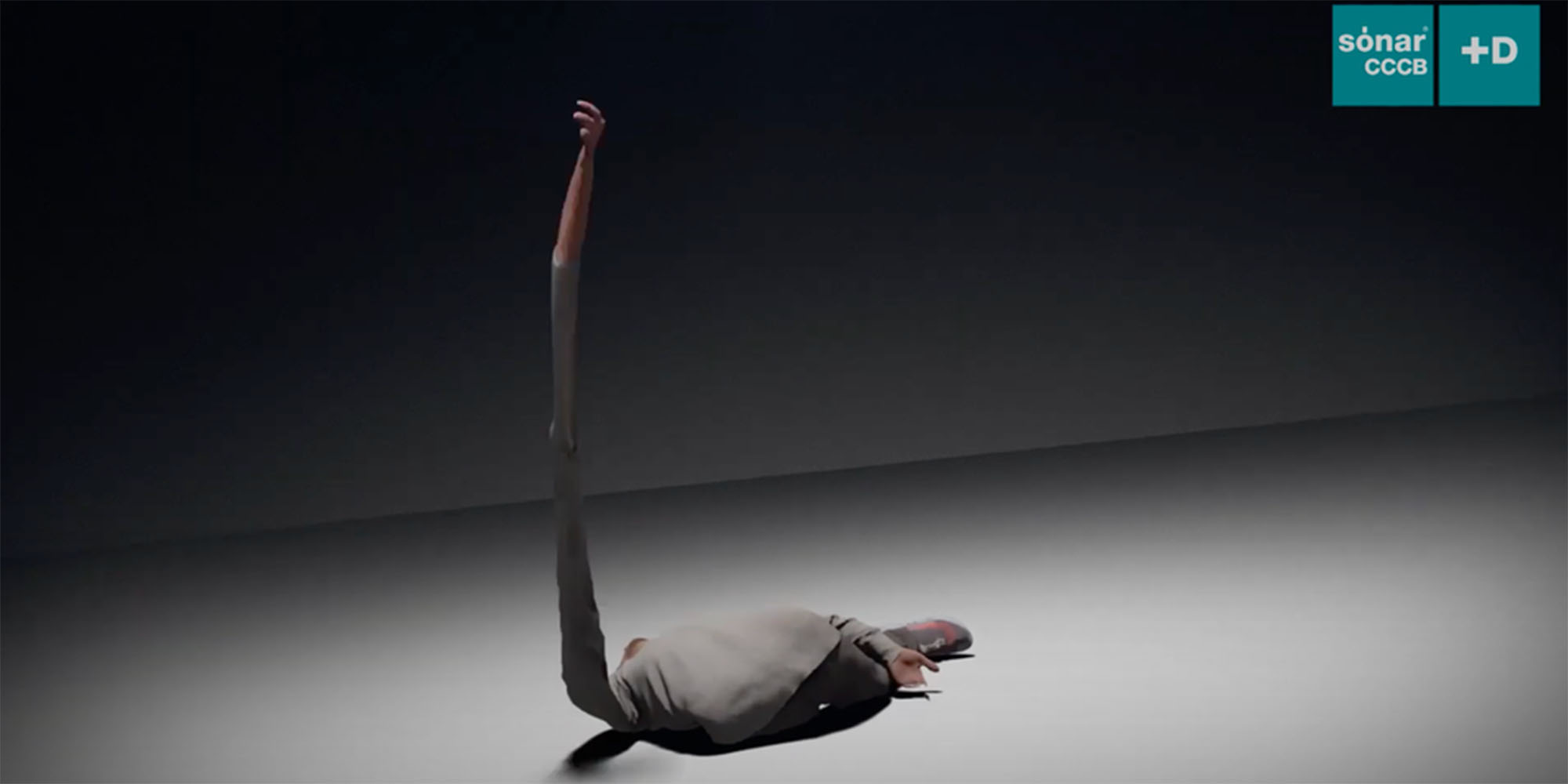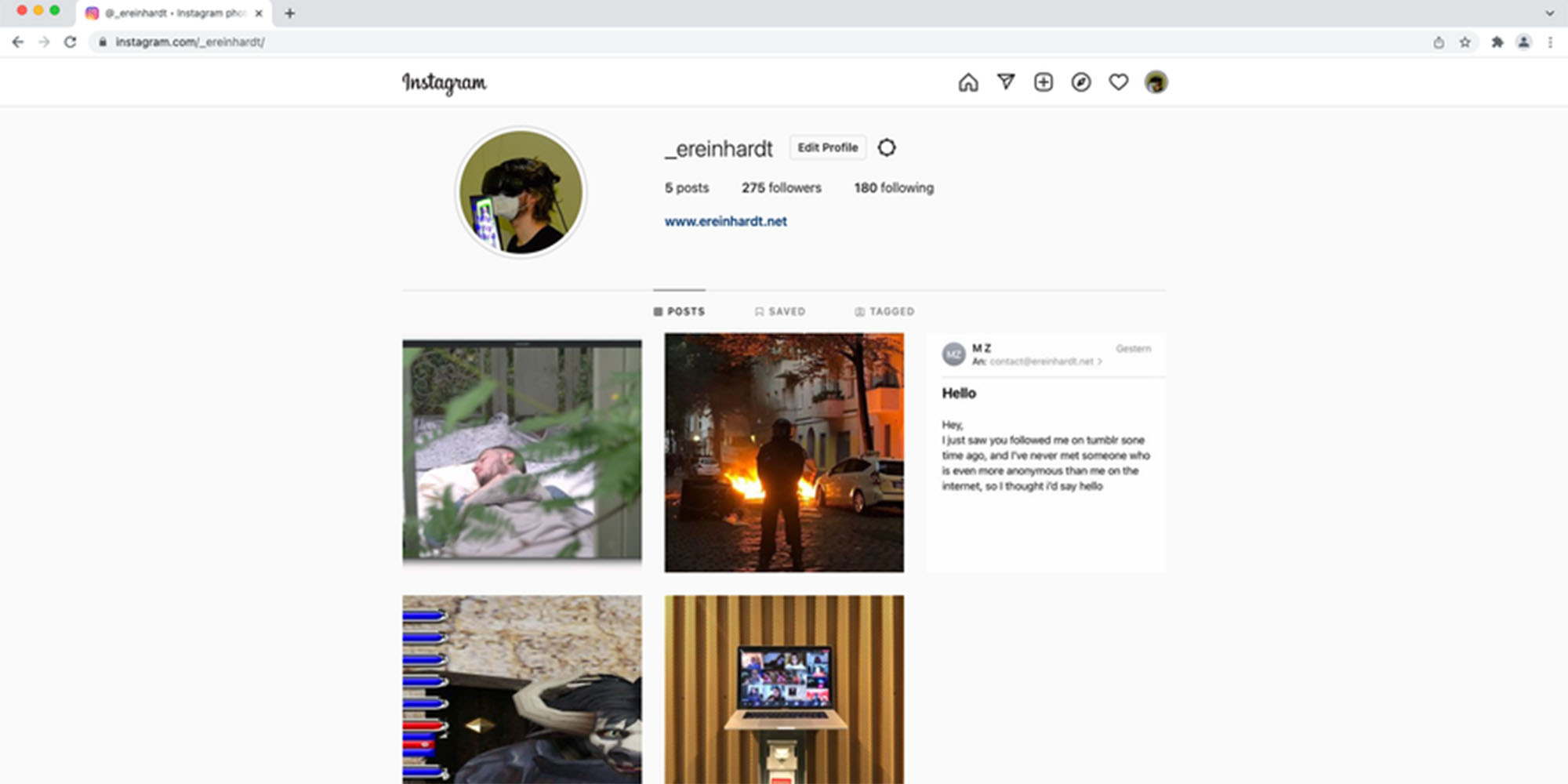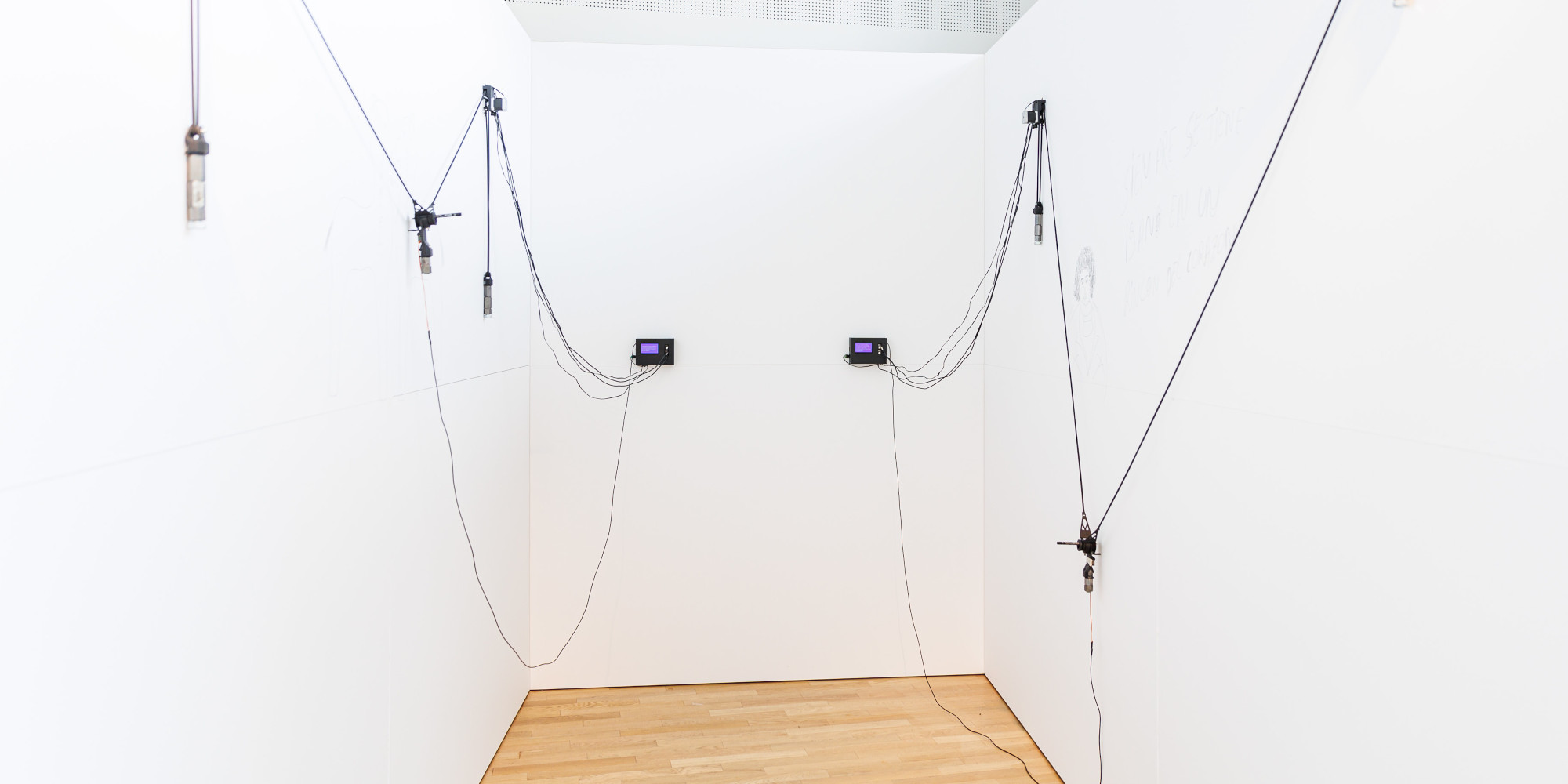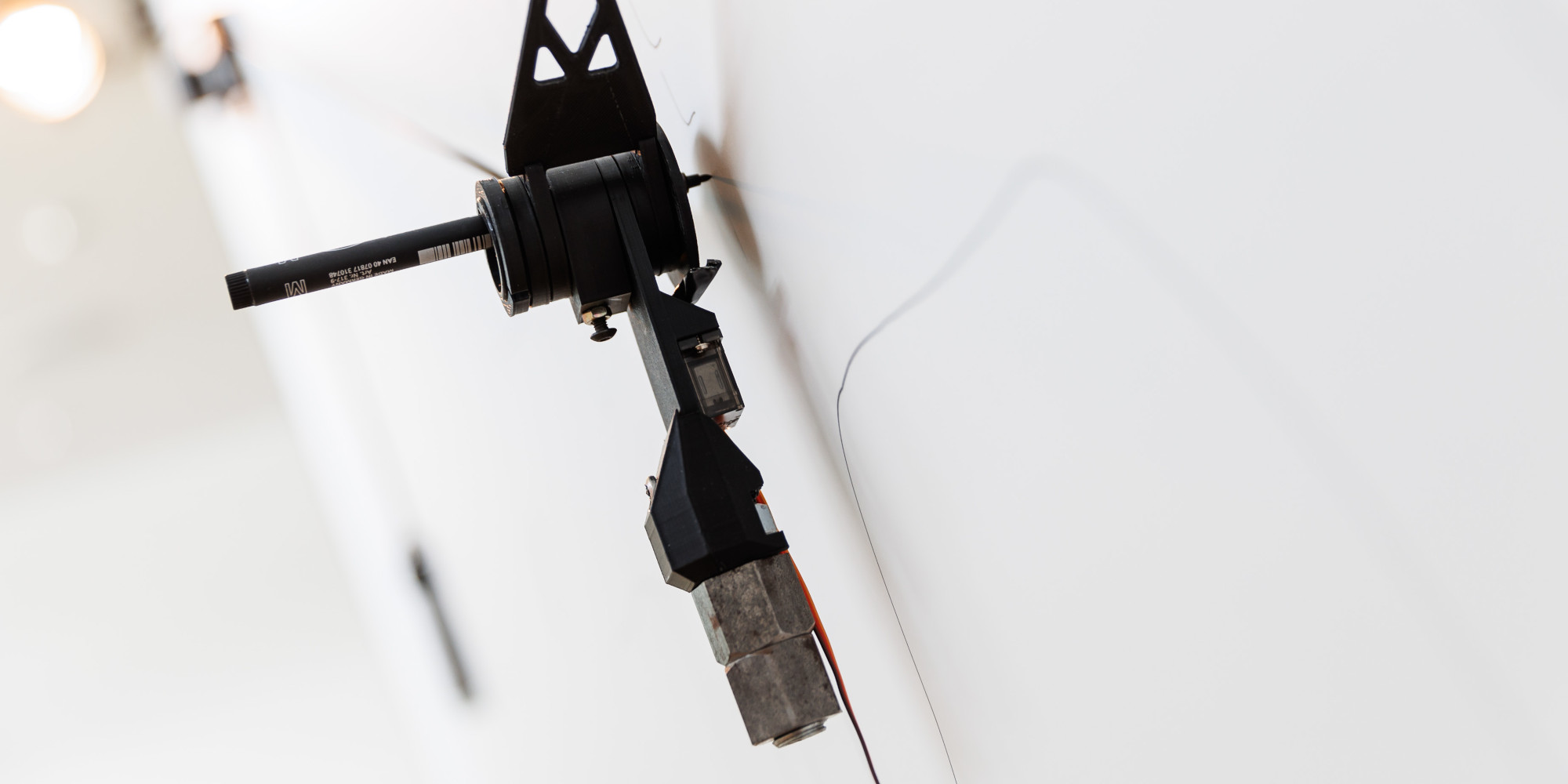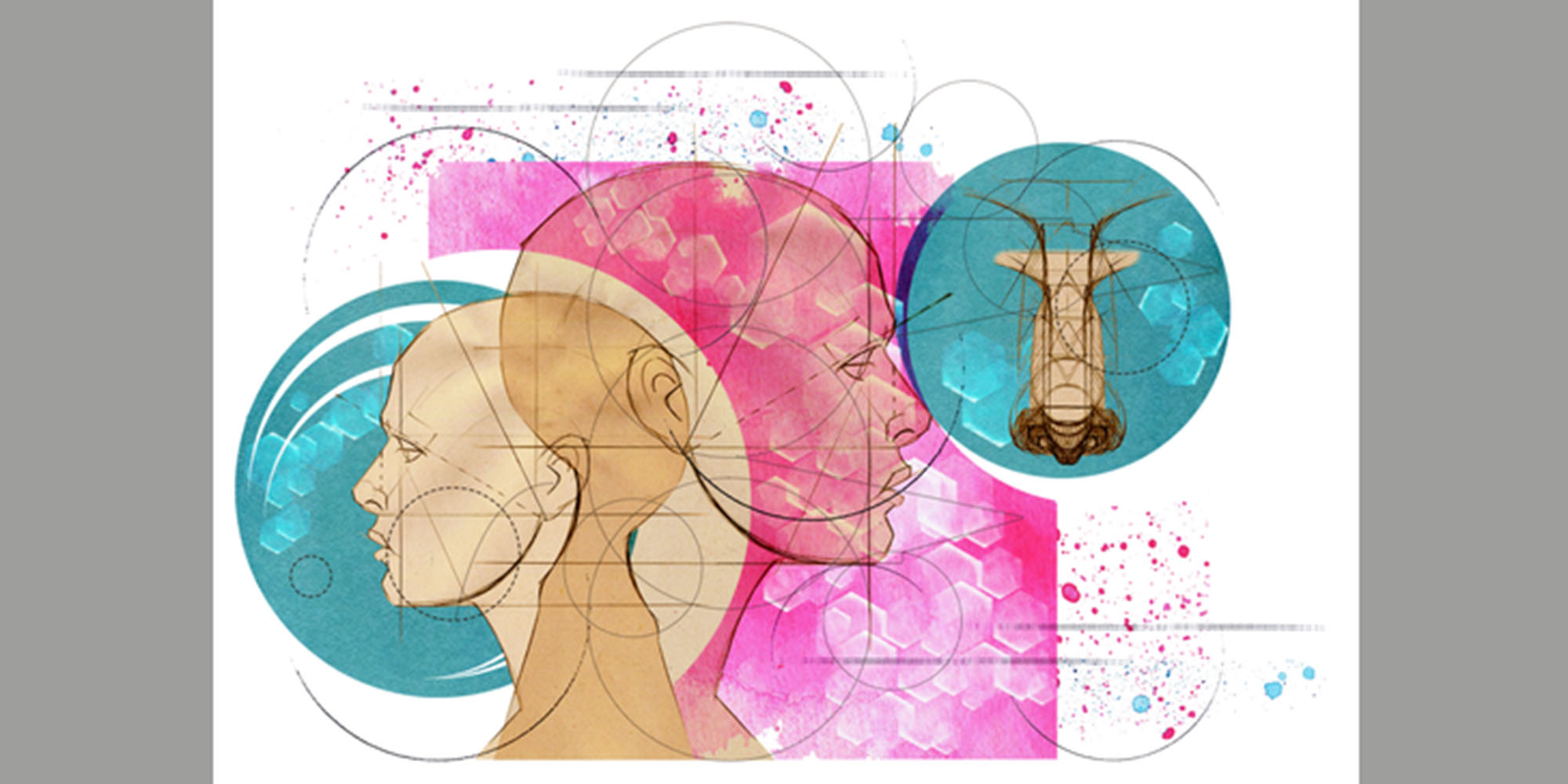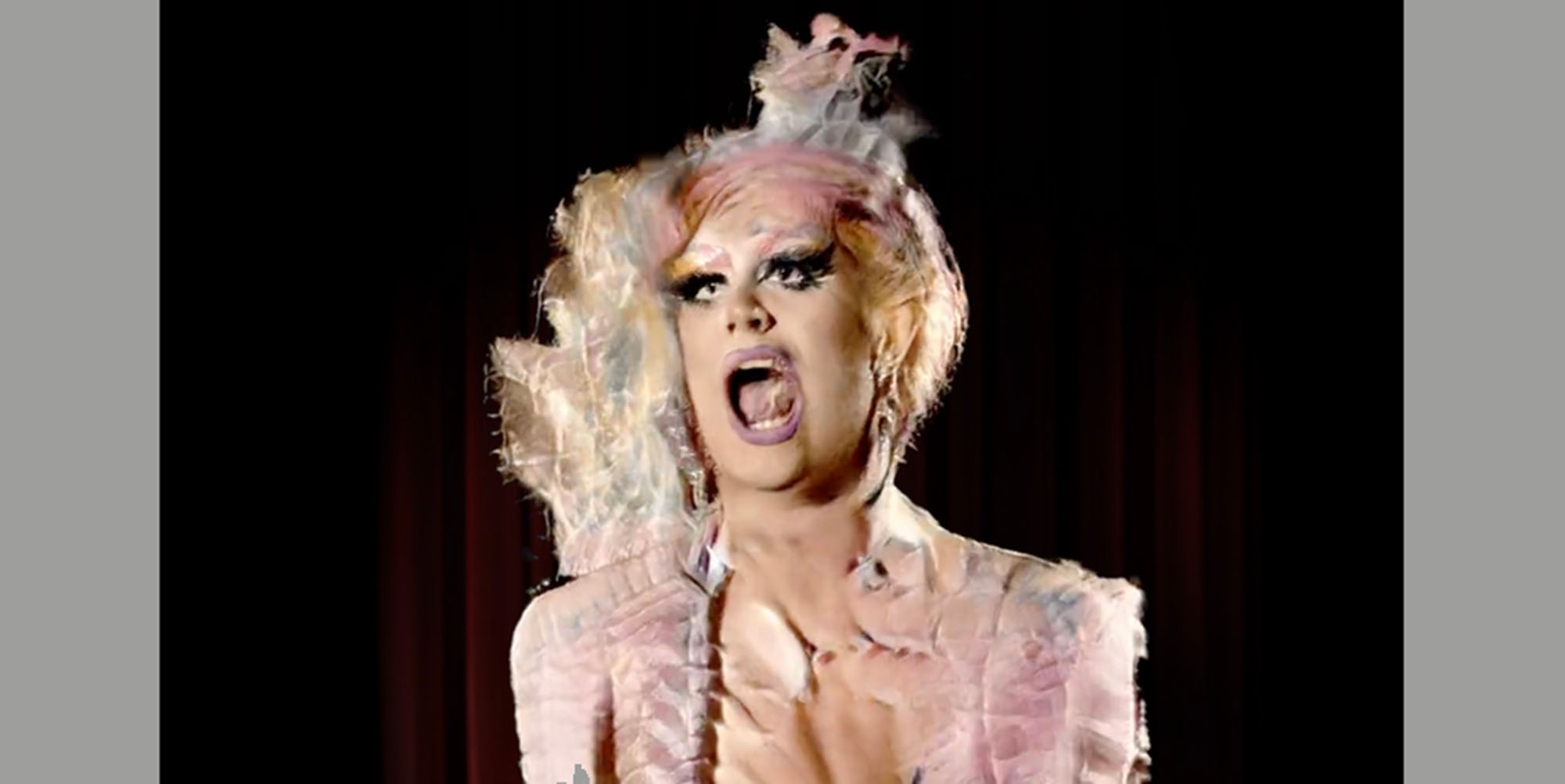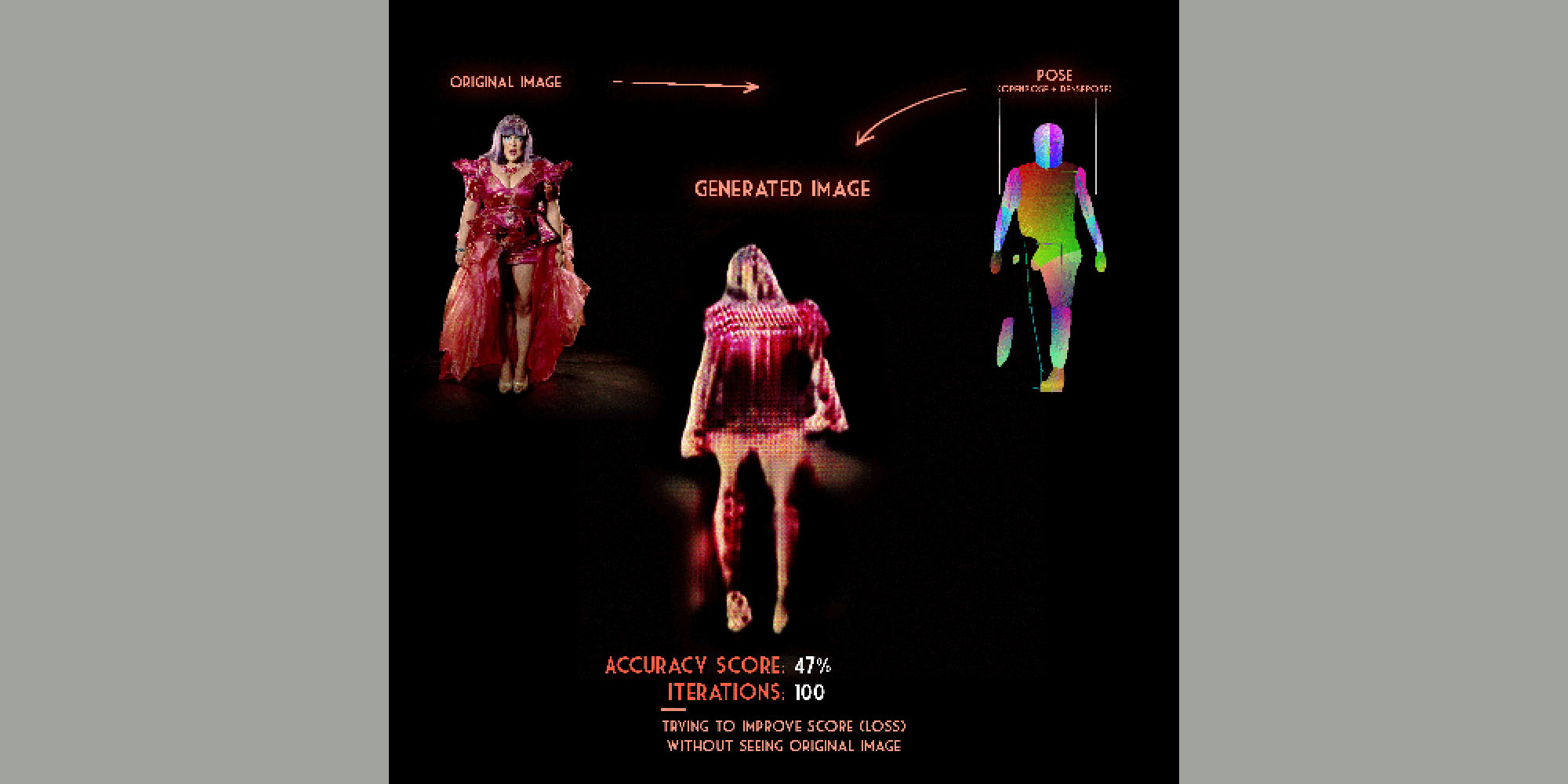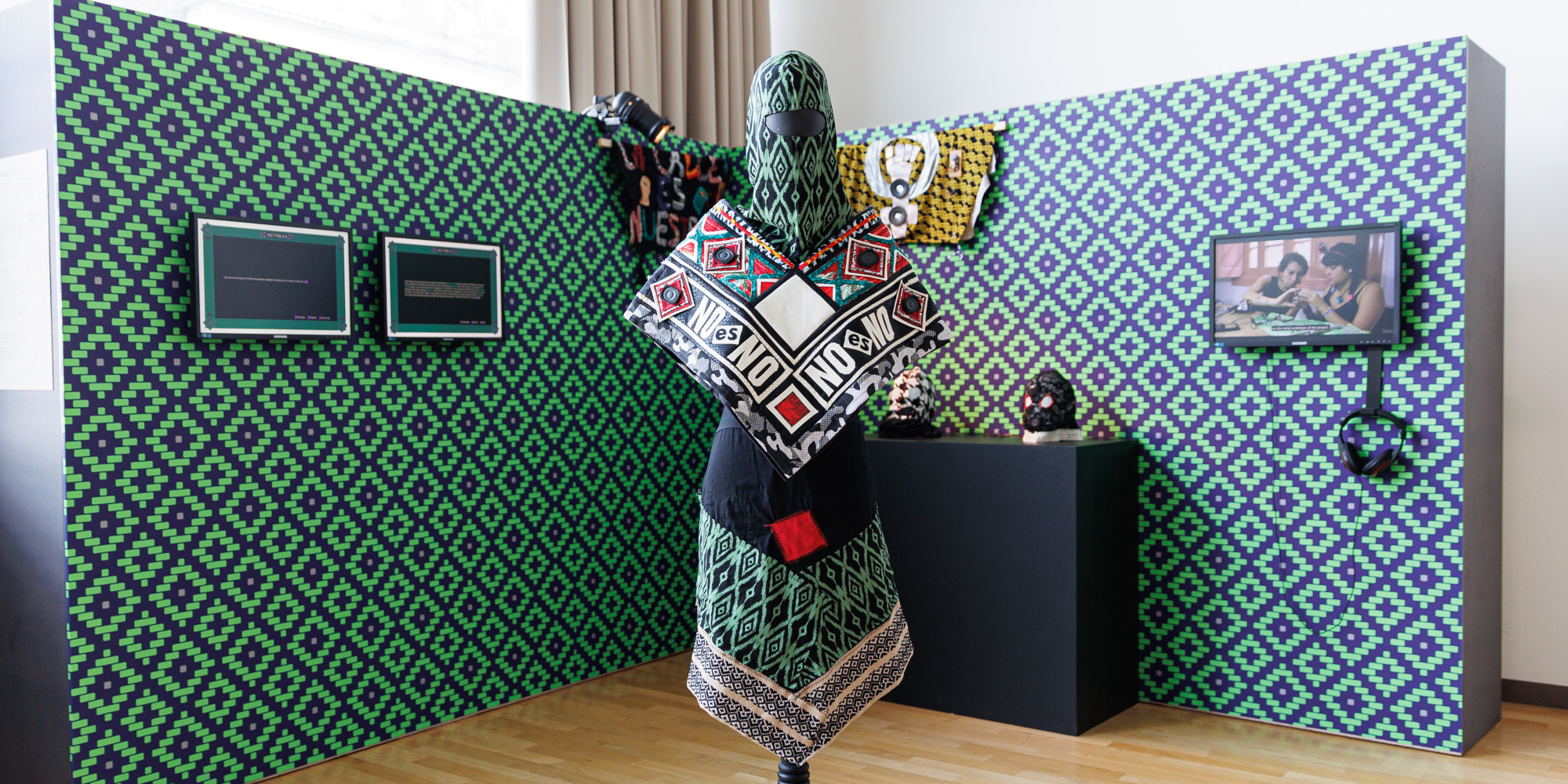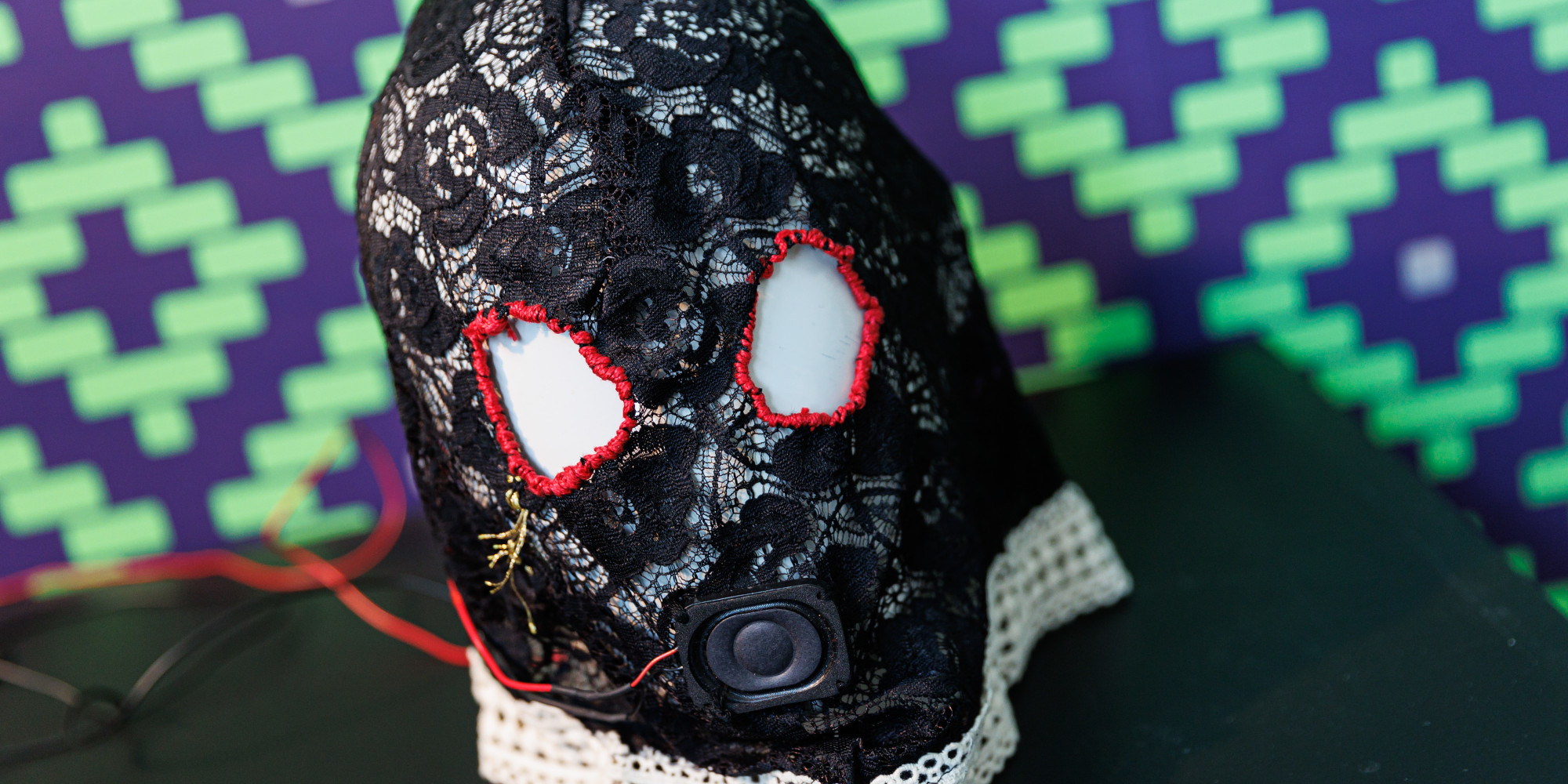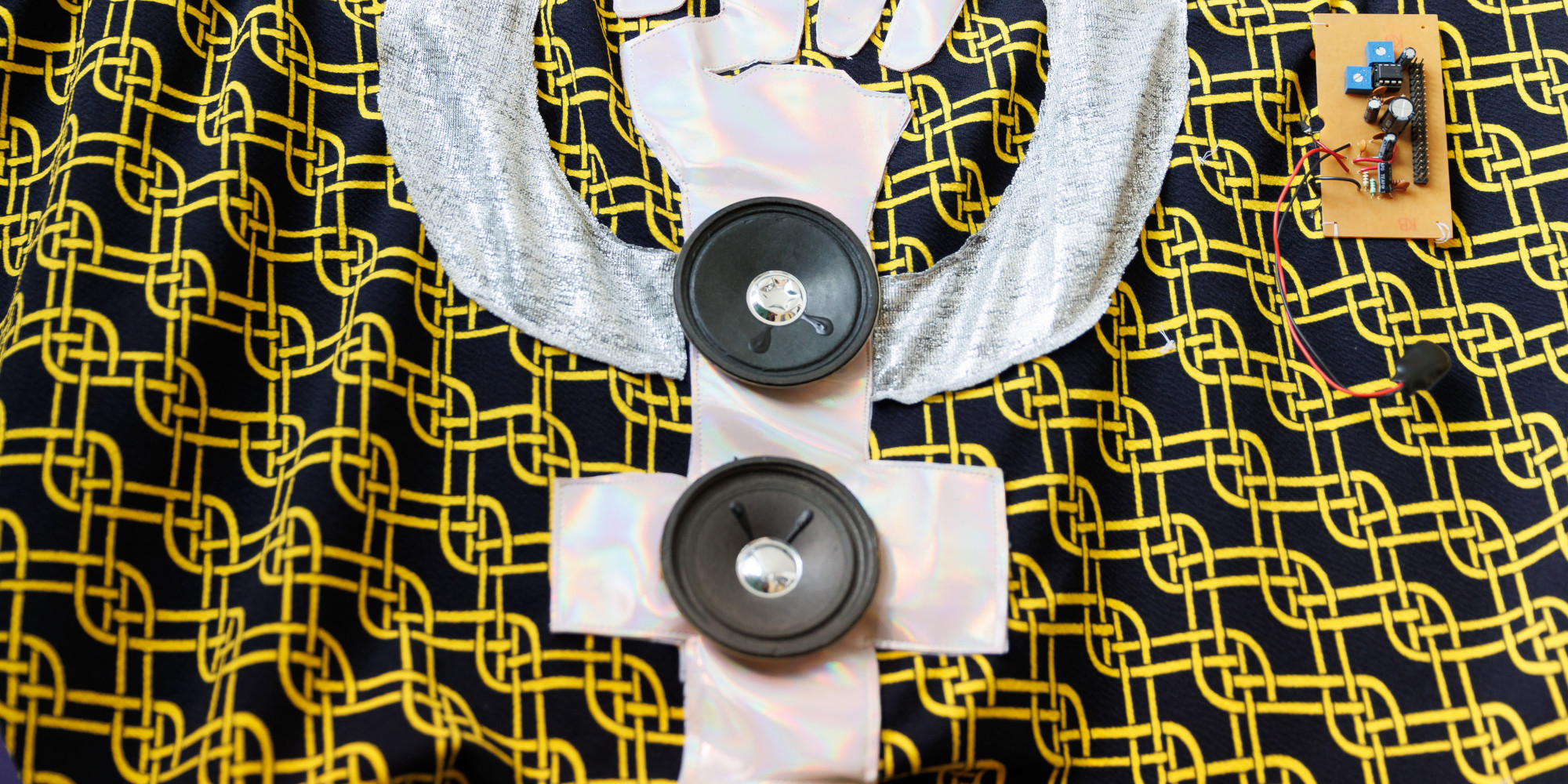Golden Nica
Bi0film.net: Resist like bacteria
Jung Hsu (TW), Natalia Rivera (CO)
Bi0film.net praises bacterial resistance in contrast to the reductionist discourse of war. We took one of the Hong Kong movement’s icons, the yellow umbrella, and adapted it based on an open resource created by Andrew McNeil, to be used as a parabolic WiFi antenna. Other than covering, hiding, and protecting the user, Bi0film.net helps them communicate. The umbrella can act as an antenna for a mini server, a repeater or a router, increasing the range, while building a nomadic network that accompanies the demonstration in the streets. In the move, the network connects and disconnects organically. Demonstrators can join the virtual Bi0film to chat, share files, and store them.
We aim at facilitating the connection to alternative networks, and at the same time acknowledge the importance of seeking autonomy in our communication technologies, now when internet censorship is used as a tool of repression on the part of authoritarian regimes.
Through artistic processes, we wonder about other politics of the living, other possibilities besides authoritarian and hierarchical political organizations, which, through long experience, we already know don’t work for us. These collaborative practices, and not only biotechnologies created in laboratories or digital technologies, are the technologies of the living through which we resist more and more as communities of organisms and less as individuals isolated by capitalism. Biotechnologies as other living, evolutionary, and mutant forms of resistance.
Self-organizing, collaborating, and communicating in a decentralized and distributed way are some of the wonderful actions of the living to break through, and that is what “resist like bacteria” means.
Jurystatement
Bi0film.net: Resist like bacteria is an open platform, inspired by bacterial resistance, created by Jung Hsu and Natalia Rivera, that helps to create nomadic networks to accompany demonstrations in the streets while also revealing a generation of young citizens who are building a new consciousness and commitment to change society. The symbolic participation endeavor, which is built on active community involvement, reflects the younger generation’s courageous hope and drive for change, highlighting how the world is interconnected, from the microscopic bio world to the vast globe we live in. The yellow umbrella, which has become a symbol of Hong Kong’s Umbrella Movement, has been repurposed as a parabolic WIFI antenna in order to extend decentralized connectivity by covering and protecting citizens. Despite the fact that the epidemic has curtailed physical interaction, two artists from two different nations—and continents—have collaborated to empower participation that can offer an alternative solution to our shared socio-political concerns.
Credits
Project by: Jung Hsu, Natalia Rivera
Co-creation with: Mutante, Juan Diego Rivera, Manuel Orellana, Carlos Acosta, Margarita González, Daniel Osorio, Ana Isabel Castrillón, Robert Schnüll, Medienhaus/project
In dialogue with: Juan Manuel Anzola, Lulu Hsieh, Carlos Maldonado, ZKL, I Lun Shih, Shung Fuwei
Video edition: Juan Diego Rivera
Shooting: Juan Diego Riveram, Leslie Chi, Chunli Wang
Models: Vais Yakarivuwan, Brian Chang
Script proofreading: Sandra Ramos
Based on the tutorial by Andrew Mcneil: The Wifi Umbrella Ultra long range Wifi
New Media Class – UDK Berlin, Prof. Jussi Ängeslevä, Luiz Zanotello
Project connected to the Suratómica Network. Coproduced by Mutante.
https://www.bi0film.net/
Award of Distinction
The Eternal Return, pre-Hispanic Interactions
Cristhian Avila (PE)
The Eternal Return is an art installation that seeks to impact on the private and collective imaginary using 3D impressions from pre-Hispanic musical instruments that are “played” again by the wind with technological assistance. The intention is to hear random interpretations of someone else’s past. This process makes us wonder about how we understand time and, as in the paradox of Theseus’ ship, whether we can confirm that the sound is the same if the body changes?
In the first instance, The Eternal Return, pre-Hispanic Interactions project revisits a real everyday aspect of pre-Hispanic Peru: sound. For this purpose, replicas of musical instruments discovered in different archaeological explorations are used and integrated into a musical, interactive, and incidental installation.
In this second instance, the project seeks to re-access and re-imagine the pre-Hispanic pieces found in different collections around the world, in order to fill in some of the gaps in our history knowledge of this period. The installation aims to unveil a collective consciousness through the sound experience.
The process begins with the collaboration of institutions in the loan of pre-Hispanic pieces from their collections. These go through a tomographic examination to make an internal and external map of them. These are then printed in a 3D material that has clay-like qualities. Then these pieces are connected to a pneumatic system that injects pressurized air into each of them randomly, following data collected from the wind.
At the same time, we used a tower with the sensors to capture the wind data, high enough to avoid any obstacles that could alter the quality. This data is then sent to an Arduino plate that interpetrates the information, the plate is also connected to an pneumatic system that will introduce pressurized air into the system. In the end, some solenoid valves open and close giving way to the air that “blows” the replicas producing sound.
Jurystatement
Eternal Return is a work that seeks to recover uncommon layers of information that feed from wind energy, a hidden force of nature that we usually do not recognize in its real dimension and importance. Through the construction of a windmill tower in an outdoor courtyard, this installation catches wind energy—which is aleatory by nature—and translates it into data using quantifications such as wind strength, angle of orientation, or incidence rhythms, which will then trigger air pumps that then play 3D replicas of pre-Hispanic musical wind instruments. The participatory installation serves as a gigantic musical instrument, whose air sounds bring connections from other times to our everyday life, becoming a library of expressions from the past, linking it to the visitor’s experience, recovering the value of nature and history, and poetically reflecting on the importance and beauty of nature, acting as a great “catcher” of the wind, embracing the modern and reconciling the material with the immaterial with forms of ancestral knowledge.
Credits
Artist: Cristhian Ávila Cipriani
Curator: Jerson Ramirez
General production: Yuriko Tanaka
Mechatronic engineering: Hayashi Mateo
Musical production: Ronald Sánchez
Technical assistant: Esteban Coronel
Consulting: Fánel Contreras, Daniel Ocupa
With support from: Museo de Arte de Lima, MALI; Fundación Telefónica del Perú; Clínica Javier Prado; Resocentro; 3D Rey; Municipalidad de Lima; Museo Central de Reserva, MUCEN; Colección Cohen; G&L ingenieros Corporación; Red Animation Studio
https://cristhianavila.com/
Award of Distinction
Perfect Sleep
Tega Brain (AU), Sam Lavigne (US)
Perfect Sleep investigates sleep and dreaming as a potential climate engineering technology. By inviting participants to experiment with their own sleep cycles, the work explores how lack of sleep and climate change are both products of the same extractivist capitalist system where regeneration, rest, and natural limits are dismissed and go unvalued.
The work is realized in two parts: as a smart phone app and an installation. The Perfect Sleep App allows users to adjust their sleep schedule, slowly increasing their sleep time over the course of three years until they achieve a state of “total sleep.” To assist users in falling asleep, the artists commissioned a series of dream incubation texts from Simone Browne, Johanna Hedva, Holly Jean Buck, and Sophie Lewis that invite sleepers to dedicate their dreamspace to envisaging a world beyond our own. These texts have been transformed into dreamscapes by composer Luisa Pereira and are best encountered in the moments between waking and sleeping. In the installation, titled Sleep Study, audiences can experience the dreamscapes from custom daybeds. The design of this reclining furniture takes inspiration from the deck chairs of Thomas Mann’s novel, The Magic Mountain, where tubercular patients doze awaiting a cure, as well as from the sleeping pods of Silicon Valley, where sleep is seen as another parameter to be optimized in the unending pursuit of excessive wealth and power. The work also includes an attempt to model the climate effects of a user’s changing sleep schedule, drawing on research that correlates average sleep time and GDP, and GDP and carbon emissions. Emission reduction scenarios are presented for a population following different sleep schedules.
Jurystatement
Both sleep and climate crisis are products of the capitalist extractivist system and Perfect Sleep invites the audience to slowly adjust their sleep schedule to reach a state of “total sleep”—pausing activity, taking into account the CO2 reduction factor, CO2 emissions, GDP over time—both online using an app and offline having a nap! The artwork converts abstract numbers into direct human experience and serves as a provocation against the learned helplessness in the face of global challenges. On the one hand, tapping into the omnipresent quantified self-movement and individual betterment, but then juxtaposing that to the planetary, collective betterment for us all, striking a chord of what the “+” in this category stands for. The empowerment that participation can promise. The media formats to tell the story, a downloadable mobile app as well as a spatial experience, make the work broadly accessible, but is also a poignant context for the critique.
Credits
Artists: Tega Brain and Sam Lavigne
App development: Sam Lavigne
Dream incubation texts: Simone Browne, Johanna Hedva, Holly Jean Buck and Sophie Lewis
Dreamscape sound composition: Luisa Pereira
Dreamscape narration: Mukundwa Katuliiba
Furniture designed with Jordana Maisie Design Studio
Perfect Sleep was commissioned by the Museum Sinclair-Haus, Stiftung Kunst und Natur, Bad Homburg.
https://perfectsleep.labr.io/
Honorary Mention
Another Moon
Kimchi and Chips (KR)
Another Moon is a large-scale outdoor apparition that creates a technically sublime floating globe made from light in the sky. 40 towers collect the sun’s energy during the day and project that light back into the sky at night, creating a second moon overhead where the beams tightly superimpose to create the three-dimensional form. The project was presented in the industrial ruins of the Zeche Zollverein (historically the most productive coal mine in Europe). The public artwork could be viewed up to 1km away, creating a focus to bring people back together in a post-corona era.
Each night the lasers turn off one by one as their batteries deplete, in relation to how much sunshine there was on that particular day. This mechanism replays the fragile energy of the day, unwinding our on-demand instinct for energy that became prevalent during the era of coal power.
The first commercial electric power plant began operation in 1882 next to Wall Street in Manhattan, triggering the second industrial revolution of electricity, capitalism, and information technologies. This global revolution brought with it an instinct of “supply and demand” to energy, where additional energy could be supplied whenever desired by adding more coal to the fire.
In a post fossil-fuel era, our instinct must change again since renewable sources such as solar and wind do not supply in response to our demand, providing energy abundantly but chaotically. Our relationship with energy will be increasingly like the one we have with the internet (e.g. On a bad day, there’s little power available and you can’t run your washing machine. On a good day, there’s plenty of power and you can charge your car). Another Moon attempts to demonstrate this emerging relationship with energy and help its audience to create new instincts. By using the irregular energy source of a clear sunny sky to power a spectacle, the spectacle must interact with an unpredictable environment and is decoupled from our demand and control. This rhythm runs in contrast to that of the coal mine where the project was presented.
Jurystatement
Despite the long-held expectation of a return to normalcy following the pandemic, we continue to live in exceptional times. We are more eager than ever for shared experiences in the physical world, despite the fact that social distancing has accelerated the adoption of remote and virtual involvement. Another Moon is a large-scale light installation in the sky that can be viewed from a distance and offers an intimate experience in a plaza. An artificial moon, illuminated by energy obtained from genuine sunlight and with a limited lifespan, as opposed to our current economy that borrows resources from another day and space. In recent years, the expansion of the private sector space race has broadened our perceptions on human territory to include (outer) space. In the meantime, the urgency of our inhabitants compels us to reflect on the crucial mechanisms that allow us to exist on our planet. Poetically, the second moon, formed by solar energy in the ruins of an industrial coal mine, creates a time of reflection for a call to action against climate change.
Credits
Artwork by Kimchi and Chips (Mimi Son, Elliot Woods)
Control and calibration: Kimchi and Chips
Mechanical engineering: Kimchi and Chips in collaboration with LaserAnimation Sollinger
Technicians: Jin Lee, Donghwi Chris Kang, Boeun Kim, Syemin Park
Installation team: Blue Wheels Veranstaltungstechnik GmbH
Another Moon was commissioned by Stiftung Zollverein’s NEW NOW Festival funded by the Ministerium of Art and Science of the State of North Rhine Westfalia.
Project supported by RAG Stiftung, Arts Council Korea – ARKO, 한국문화예술위원회, Fund for Korean Art Abroad (KAMS).
Special thanks to LaserAnimation Sollinger for 5 years of support for the Another Moon project
https://kimchiandchips.com/works/anothermoon/
Honorary Mention
Behind Shirley
Ibiye Camp (GB)
Behind Shirley deconstructs and rethinks the colonial narratives in the development of facial recognition systems, exploring how darker skin was not taken into account in film chemistry and is now ignored in facial-recognition software.
In photography, “Shirley cards” were used as a standardized reference for color-balancing skin tones. These cards generally showed a single Caucasian woman dressed in bright clothes, and colored square blocks of blue, green, and red. The chemicals distorted tones of red, yellow, and brown, which led to faults when photographing darker skin. Film was not improved until furniture and chocolate makers began complaining that it was unable to capture the difference in wood grains and chocolate types. The default towards lighter skin in technology is still present today, with facial recognition occasionally not registering people of color.
The algorithmic bias that exists in digital-imaging technology is due to human biases. When trying to make artificial intelligence, we inevitably recreate human intelligence. AI finds patterns from within pools of data, reflecting our own behavior and often exacerbating its negative aspects. Empathy has a growing importance in artificial intelligence, datasets and algorithms, fields whose inherent perspectives require further interrogation.
Jurystatement
Facial recognition, AI, and algorithms govern our access to information—from unlocking our smartphone with a glance to future crime prediction, healthcare, law enforcement surveillance, airport screening, employment, and welfare. However, the persistent lack of diverse representation in the space of imagination and decision making in the tech industry as well as lack of legislation applicable to technology widens pre-existing racial discrimination and inequality. Behind Shirley recalls the early decades of photographic invention where a single light-skinned Caucasian image was used as a standardized color-balancing reference. As a result, the technology was incapable of accurate representation of black and brown bodies. Behind Shirley seeks to recover our historical memories of technological shortcomings from the past, and to link them to present facial-recognition software. The light-skinned default of representation continues to have profound lifelong consequences for black and brown bodies in a wide range of life experiences from media and tech to healthcare and the criminal justice system. Behind Shirley in turn offers new possibilities of algorithmic resistance, using technology to reimagine a speculative future where resistant bodies are joining the growing movement where “racial justice is algorithmic justice.”
Credits
Behind Shirley, Film 5’58”, by Ibiye Camp
With support from: 5th Istanbul Design Biennial
https://cargocollecive.com/ibiyecamp/Behind-Shirely/
Honorary Mention
Brave New Commons
Masaki Fujihata (JP)
Brave New Commons is a project considering the new type of ownership of digital artwork made possible using NFTs, not based on a uniqueness rooted in conventional materials, but as a novel means of ownership utilizing the properties of digital data. In contrast to the open ascending price auction, I named it “subdivision method,” which determines the price of an artwork by dividing an arbitrary price set by the artist by the number of purchasers. A higher number of purchasers results in a lower price. Also, as there is no distinction between the original and duplicate in digital data, multiple numbers of people will own the exact same artwork, creating a form of “distributed ownership” different from what some call “co-ownership.”
The artist had been thinking that making copies and distributing was the only way to make digital artwork last for the future, similar to Public Domain Software. Now the NFT came in, but the current economics surrounding NFT art is too speculative. Therefore this project was realized to criticize the condition of NFT art.
Jurystatement
Amongst the many NFT projects submitted to the award, Brave New Commons is one of the very few that speculates on how it could have been otherwise. Instead of riding the hype wave of speculation and the recognition of the value of digital art as speculative investment on the art market, Masaki Fujihata reminds us of how the immaterial lightness of digital art could have been valued. Simultaneously he presents an ironic evaluation of the hyped field of NFTs in general. Excavating a cached tmp file from an ancient media from the artist’s early career that has miraculously survived the myopic focus of digital artefact over 30 years, its visual meaninglessness is dwarfed by the sheer existence. The visual similarity to the many pixels in today’s NFT craze is then turned into something other than speculative money laundry: The price set by the artist is divided by the number of interested buyers, who all pay an equal fraction of the set price. This way, the value, as seen by the artist and the shared ownership, and as experienced by the audience, is in stark contrast to the current crypto/nft reality.
Credits
Conceived by Masaki Fujihata
Exhibition *Coded Theory* 2021, 3331 Arts Chiyoda, Tokyo, organized by Masato Nakamura (commandA LLC).
Coordinator: Himi Tsukayama (nutriment), Arasuke.
Supported by Aiko Konabe (Startbahn Inc).
Website development by Akihiro Kato (drawCircle Inc), Daishi Tajima (TISSUE org.)
Special Thanks to Taihei Shii (Startbahn Inc.)
http://mf.3331.jp/
Honorary Mention
BLACKTRANSARCHIVE.COM / WE ARE HERE BECAUSE OF THOSE THAT ARE NOT
Danielle Brathwaite-Shirley (GB)
Traditionally Black Trans people have been misrepresented or absent within archives. BLACKTRANSARCHIVE.COM also known as WE ARE HERE BECAUSE OF THOSE THAT ARE NOT is an archive built and designed by and for Black Trans people. The archive’s aim was to find a way to more accurately store Black Trans Existence, an archive that would erase us as it attempts to remember us. Culminating in a 3D animated game, the project preserves the stories of Black Trans people generating a space where our existence cannot be ignored. The piece, designed alongside artists Ebun Sodipo, Tobi Adebajo, Jacob V Joyce, and contributors, was assembled from the ground up by a team of Black Trans people using their own lived experiences as the bases for development. From these conversations, all characters, landscapes, and stories were fleshed into a breathing resemblance of themselves.
Using the style of a “Choose Your Own Adventure” as well as influence from PS1 games, visitors are required to reveal their own identity in order to access the work. Depending on how you treat the archive, your journey through the work will mirror your treatment of it.
Jurystatement
BLACKTRANSARCHIVE.COM critically reconfigures our notion of archives, offering new possibilities for accessing them while questioning their institutional forms constrained to patriarchal categorizations that neglect or misrepresent Black Trans people. The artists’ response is an archive in the form of a web-based 3D video game, built and designed by and for Black Trans people. Their designers and developers considered their own lived experience to produce a viable and open platform which subsequently re-structures the relationship between power, knowledge, and subjectivity that prevails in today’s digital platforms. By using well-elaborated 3D characters and landscapes, BLACKTRANSARCHIVE.COM takes us into an extensive exploration of a virtual world inhabited by fluid genders and personalities. It is deliberately designed from the perspective of Black Trans people and therefore is not inviting for everyone. However, while one interacts with the archive, it shapes an intimate dialogue for comprehending that solidarity and empathy are possible in an online world that is commonly gender biased and racially hierarchized.
Credits
Directed by Danielle Brathwaite-Shirley
Programming, coding: Emily Martinez
Contributors: Danielle Brathwaite-Shirley, Marikiscrycrycry, Pacheanne, Tobi Adebajo, Ebun Sodipo, Bernice Mulenga, Ornella Ospino Blkmoodyboi, Jacob v Joyce, Shay P-W, Zamy, Camus-Doughen, Elijah Che, Travis Alabanza, Raks, Arthur Kibet, Vik, Aaron Marlowe, Christopher
Special thanks to METRO Transcend
Commissioned by Science Gallery
https://blacktransarchive.com/
Honorary Mention
morphecore
Daito Manabe + Shingo Oono + MIKIKO (JP)
morphecore was an experimental lecture-performance that probed new possibilities for performance at the intersection of neuroscience and dance. Armed with fMRI and brain decoding technology, the project reconstructed bodily poses from visual cortex activity, generating choreography that was further manipulated to test a range of physical variables—from the effects of gravity to muscle elasticity and joint rotation—in an exploration of what modes of dance might arise free from real-world constraints. The results were presented in a video narrated by a Daito Manabe avatar, culminating in a dance performance by this digital Daito that became increasingly abstract as it transcended the physical limits of the human body. The dance performance drew on 3D scan data of Daito Manabe, visual cortex activity recorded by fMRI, and motion capture data from Shingo Oono and ELEVENPLAY dancers.
By parsing and reconstructing dance as three constituent elements—pose, motion, and choreography—we sought to probe modes of physical expression free from the constraints of gravity and the physical limits of the body’s range of motion. Further studying the “noise“ and “glitches” that arise in chaotic neural processes, the project anticipated a future when dance might be generated by sound stimuli to the brain that produce an interactive response in the body.
As the coronavirus pandemic prevented the gathering of new data from in-person test subjects, the work was produced as a prototype based on simulations created with reference to prior fMRI data and procedures acquired in 2018. Although a future actual data set will inevitably elicit different results, the brain decoding methodologies underlying the project remain the same. It is a work in progress.
Jurystatement
Rendered as a dance performance, but clearly positioned as a work in progress, morphecore pushes the elusive discourse of Brain Computer Interface to a tangible experience. Collaboration with Tokyo University’s cutting edge brain scans, and with a trained machine learning model, the artists map the imagined poses to a rigged 3D model and animate a sequence of them to form a choreography. The limits of the brain reading are viscerally felt in the glitchy movement, but at the same time renders the potential in an immediate way: no more as a theoretical reference, philosophical position, but as a concrete experience with bespoke aesthetic. The work highlights the role interactive art (+) can play presenting a mirror of the hopes and worries of technological advance in a direct, relatable experience. The work is also a poignant reflection of the disembodied existence on zoom calls that we all have experienced in the last year, leaving us yearning for physical touch.
Credits
Motion capture dancer and choreographer: Shingo Okamoto
Supervisor: MIKIKO (ELEVENPLAY)
Music co-producer: Hopebox
Editing director: Kenichiro Shimizu (PELE)
CG director: Kenta Katsuno (+Ring)
Effects artists: Tetsuro Takeuchi (quino grafix)
Effects artists: Jun Satake (TMS JINNIS)
Effects artists: Tai Komatsu (cai) ,Keisuke Toyoura (cai)
Effects artists: Mikita Arai (Freelance)
Effects artists: Tsukasa Iwaki (+Ring)
CG producer: Toshihiko Sakata (+Ring)
Data processing: 2bit
Motion capture: Crescent, inc.
3D scan: K’s DESIGN LAB
Compositor: Naoya Kawata (PELE)
Project manager: Naoki Ishizuka (Rhizomatiks) + Yurino Nishina (PELE)
Producer: Takao Inoue (Rhizomatiks)
https://rhizomatiks.com/en/work/morphecore/
http://www.daito.ws/
https://rhizomatiks.com/
Honorary Mention
NoSearchBar
Erik Anton Reinhardt (DE)
A distinction can be made between specific and non-specific software-related data access: The specific search hardly has any surprises in store, due to its purpose of existence. We find what we are looking for, the problems, preferences, and needs are specifically individual, predominantly environmental, and self-driven. However, the amount of data gathered by websites appears to be too large. A trivial or complex speculative form of sorting, categorization, and curation is required—the unspecific access. Examples of this are forecast systems, sorting, categories, and recommendation systems, which try to anticipate users’ problems, preferences, and needs but often also to create new ones. By removing the SearchBar, we are exposed to an ideological software anticipation. We no longer have the opportunity to articulate our own problems, preferences, and needs but are always left with mixed feelings between frustration and hope that the right thing could still emerge.
Jurystatement
The new cognitive-capitalism mentality in which the internet is based, relies heavily on search functionalities to frame how we experience our digital habitat. When we search online we are not finding answers, but also inputting valuable information about our interests and motivations and feeding gigantic databases that extract and accumulate personal data, which are the basis of recommendation systems. Anticipating human behavior through the use of the analysis of the information we all search about is at heart of Google’s business model and the future products and services they will provide. However, search tools systematically disregard and include information, giving importance to some at the expense of others. Search engines are not merely technical feats, but also embed political and social exclusions, tapering our capacity to find the right stuff. NoSearchBar is a Chrome extension which removes the Search functionality from web sites. While using it, and restricting our capacity to search, it makes us reflect critically on our profound dependence on text-based queries. At the same time, it helps us to bring back our curiosity to browse or find information through non-search mechanisms.
Credits
Finn Jakob Reinhardt, New Media Class (UdK Berlin)
https://www.ereinhardt.net
https://chrome.google.com/webstore/detail/nosearchbar/fjjlanpalmagenpageablaphkfcchado?hl=de
Honorary Mention
Siempre se tienen 19 años en un rincón del corazón
Gabriela Munguía (MX), Germán Pérez (AR)
The still functional architecture of the Espacio de Arte Contemporáneo, now the cultural epicenter of the city of Montevideo, constantly evokes its past. From the time when this building, now dedicated to the arts and culture in the heart of the historic center, functioned as a detention center for almost 130 years, better known as the Migueletes Prison. This great panoptical machine dedicated to confinement and isolation was deployed as an instrument of modernity to control and erase bodies. How can we reconstruct this great machinery into a device for the memory of bodies and matter that layer by layer juxtapose and recompose again and again this physical and symbolic space that we inhabit?
Siempre se tiene 19 años en un rincón del corazón’ was born as an anarcheological exercise that tries to embrace a past whose scars and wounds are still latent, even 20 years later. In this search, the technological device was interwoven as a sensitive interface that helps to make visible the depth of our contemporary biopolitical architectures.
This work consists of an installation composed by two drawing machines that rewrite on the walls different texts found in the abandoned cells of the prison, written by the prisoners once confined in this space. These machines for memory interact as gestures in the story of this space that still disputes its identity, articulating a dialogue between the latency of the past and the present traces of the bodies and its material memory.
This project was deployed as an exploration to develop machines and algorithms that allow us to experiment the human-machine-architecture interaction as a collective experience of territories. Through a transdisciplinary approach this project explores digital open source technologies to recover the structural memory of a place, bringing into tension the systems of power in dispute with the bodies that inhabit it and shape it along with its symbolic and material new resignifications, ruins, and fissures.
Jurystatement
The Siempre se tiene 19 años en un rincón del corazón project is a reenactment and an archeological exercise performed by 3D printed open source tech devices at the site of the former Migueletes Prison, now Espacio de Arte Contemporáneo, the cultural epicenter of the city of Montevideo. The installation is a live performance of two drawing machines slowly and precisely redrawing on the walls the text and drawings found in the prison cells, written by the prisoners once confined in that space. Politically motivated punishment has historically been a tool for oppression, exploitation, and colonial power. Since the 1970s many countries have increased their punitive approach, and the prison-industrial complex has become one of fastest-growing outlets for investment capital. The installation is a powerful poetic gesture that explores the potential of machines and algorithms to resurface our faded historical memories by reincarnating the actions of the erased and captive bodies.
Credits
This artwork was commissioned by the Espacio de Arte Contemporáneo de Montevideo, Uruguay to participate in its 10th anniversary exhibition *Delitos del Arte*
https://www.gabrielamunguia.com/artes/siempre-se-tiene-19-anos-en-un-rincon-del-corazon
Honorary Mention
Technologies of Hope & Fear: 100 Pandemic Technologies
Marek Tuszynski (PL), Stephanie Hankey (GB)
Technologies of Hope and Fear is an artist archive of 100 data-driven, machine learning, and AI-enabled technologies developed, marketed, and implemented to manage the pandemic and ultimately help societies “get back to normal.” Whether attached to our bodies, installed in hospitals, schools and train stations, hovering in the air, or scraping information from social media, this project bears witness to the ambient, biometric, mobility, and behavioral surveillance and intelligence revolution that the pandemic has enabled.
The project creates a snapshot in time at the beginning of the pandemic. It is a curated artist archive of rapid shifts in the uptake of data and intelligence as a response to the crisis. Chosen from over 250 technologies worldwide, the artist archive investigates how data-driven “disaster capitalism” morphs in response to the crisis and the linguistic and aesthetic modes of corporate narratives captured by promotional videos and visual metaphors. It documents transgressions between public and private spheres around the world in the context of the pandemic.
By exploring the trade-offs between safety and freedom, surveillance and control, the project intentionally deals with questions of scale between the individual and millions of individuals, feedback loops that create individual and collective insights. It charts the rise of the “pandemic pivot,” a range of solutions looking for problems.
Some of these technologies bring hope, and some play into our fears. Ultimately the project asks What kinds of societies are we building? What trade-offs are we willing to make? And do these techno-solutions help us succeed in controlling the virus, or only in controlling the hosts?
Jurystatement
The pandemic became a turning point in terms of a crisis that has had and continues to have a profound influence on human behavior, living, and working, but also as an opportunity for governments and companies to deploy further monitoring tools and take a further step towards the normalization of surveillance. A timely and relevant work, Technologies of Hope & Fear presents us with a snapshot of pandemic data-driven, AI enabled, and machine learning technologies that were developed and marketed as solutions for getting society “back to norma.l” Projects that bring hope to some, but also paying into fears of dystopian worlds, the archive gives a glimpse of the corporate, governmental, and individual products and visions of surviving a pandemic world. At once a collection of techno solutionist ideas, and another reminder of the tech world’s obsession and blind faith in data collection and quantification as the answer to all.
Credits
Creation, research, and direction: Stephanie Hankey and Marek Tuszynski
Tactical Tech team contributors:
Design: Yiorgos Bagakis
Technical direction: Laurent Dellere
Editorial: Christy Lange
Copy-editing: Alexander Ockenden
Collaborators:
Research and production: Patrick Harvey
Illustrations: Ann Kiernan
Engineering: Bernardo Loureiro
Special thanks to Daphne Dragona
With support from: The Onassis Stegi: Concept development, artistic direction and digital production support. The project was produced during the “Geographies of AI” residency by Onassis Stegi, organized in the context of the European ARTificial Intelligence Lab 2020. Co-funded by the Creative Europe program of the European Union. The Swedish International Development Cooperation Agency (SIDA): Support on the international research component of the project.
https://techpandemic.theglassroom.org/#
Honorary Mention
The Zizi Show
Jake Elwes (GB)
“If AI holds a mirror up to society, then Zizi applies the makeup.”
Drew Hemment
The Zizi Show (2020) is a deepfake drag cabaret, a virtual online stage hosting a groundbreaking new show with a twist. It features acts that have been constructed using deepfake technology, developed in collaboration with the London drag community. The Zizi Show dissects one of the dominant myths about AI, the notion that “an AI” is a thing we might mistake for a person. It is also about how we can create our own datasets and take back control, and as a queer community whether we want to be recognized by these systems, and how can we queer these systems.
The bodies in the show have been generated by neural networks trained on a community of drag artists who were filmed to create training datasets at a London cabaret venue closed during COVID-19. The project opened up safe spaces for creative expression, in person and online.
The Zizi Show constructs and then deconstructs a virtual cabaret that pushes the limits of what can be imagined on a digital stage. During each act audiences are invited to interact with the website and play with which deepfake bodies perform which songs. The deepfakes were created collaboratively in celebration, resisting the exploitative and oppressive nature of deepfakes. At times this breaks down when the AI tries to conceive impossible positions or combines multiple different queer identities; it can even reveal the skeleton tracking the deepfake is built on.
The Zizi Project (2019 – ongoing) is a collection of works by Jake Elwes exploring the intersection of AI and drag performance. It is a partnership with the Experiential AI research group at Edinburgh Futures Institute. Drag challenges gender and explores otherness, while AI is often mystified as a concept and tool, and is complicit in reproducing social bias. Zizi combines these themes through a deepfake, synthesised drag identity created using machine learning. The project explores what AI can teach us about drag, and what drag can teach us about AI.
Jurystatement
AI, neural networks, and facial recognition technologies are often mystified constructs, concepts, and tools, and complicit in reproducing social bias and reinforcing racism. But what might happen if AI intersected with drag? The Zizi Show is responding to the lack of representation and diversity of training datasets, which are usually based on normative identities, and aims to disrupt and subvert these systems by bringing in drag and gender fluid faces. The result is an extraordinary deepfake drag cabaret that pushes the boundaries of digital stage content and gives back control to queer communities that were involved in creating the dataset, while challenging ideas about gender. The show, which is accessible online, allows you to pick a deer-fake avatar, choose a song, and create your own performing act, while its glitchy aesthetic exposes the fragility of AI technologies. The Zizi Show is a much needed injection of queerness, difference, and otherness in an otherwise AI world of constructed, binary identities.
Credits
Artist, coder & producer: Jake Elwes
Director of Drag: Me the Drag Queen
Web & development: Alexander Hill
Camera & lighting: Toby Elwes
Filming location (LGBTQ+ Cabaret Venue):The Apple Tree
Cast of drag artists: Bolly-Illusion, Cara Melle, Chiyo, Dakota Schiffer, Lilly SnatchDragon, Luke Slyka, Mahatma Khandi, Mark Anthony, Me, Oedipussi Rex, Ruby Wednesday, Sister Sister, Tete Bang
The Zizi Show is part of The New Real by Edinburgh Futures Institute at Edinburgh International Festival
https://zizi.ai/
Honorary Mention
Voz Pública
Dora Bartilotti (MX)
Voz Pública is a tactical mediation and participatory art piece that seeks to amplify the protest against gender violence in the urban context of Latin America. The intention of the project is to be a “voicing and amplifying” mechanism for those voices that have remained neutralized as a result of a society that still discriminates against women, a society that makes invisible the violence that crosses us, as a complaint and collective demand to recover our right to the city.
From a commitment to creative activism, the project is made up of three parts working together:
The first part consists of an online participation and visualization platform (www.vozpublica.cc), where women and non-binary people can share, in a textual and anonymous way, personal stories related to this problem. From these contributions a database is generated that is linked to the other two parts of the project.
The second part consists of an electronic textile that “gives voice to and amplifies” these stories through a voice synthesizer, giving them physical presence in the public space. This textile takes as visual reference the Latin American textile tradition, and graphics related to activist and feminist struggles. The electronic part of the textile consists of an embedded computing system, conductive thread, and an array of micro-speakers. In this way, the textile connects to the Internet, downloads the database of testimonials, converts them into voice, and amplifies them in an automated way.
The third part consists of a series of artistic laboratories called “La Rebelión textil” (The Textile Rebellion). These laboratories aim to be convivial spaces for reflection and exchange of knowledge, as well as for the appropriation and collaborative creation of electronic textiles based on the initial prototype. The ultimate goal of these laboratories is to generate collective performative actions to activate these devices in public spaces, as a demand to recover our right to the city. Currently seven editions of La Rebelión Textil have been developed.
Jurystatement
At a time of a global crisis of gender-based violence and ongoing violation of women’s, girls’, and non-binary peoples’ human rights—serving to maintain structural gender inequalities, Voz Pública becomes a powerful participatory platform for breaking the silence. From enabling women and non-binary people to anonymously share personal stories of gender violence through an online participatory platform, to embedding these stories into collaborative electronic textiles—referencing traditional Latin American textiles and graphics linked to female struggle—to activating these textiles through performing protest acts and becoming an amplifying mechanism for taking these stories to the streets to make them heard. Bringing these voices to the public space and society is the ultimate goal of the project; to the society that not only refuses to hear and ignores the violence, but also a society that discriminates against women and non-binary people.
Credits
Project by: Dora Bartilotti – Original idea and conceptualization, textile design and production, graphic and web interface design, design and teaching of Laboratories, performative actions, textile programming and electronic
Web and electronic programming: Leonardo Aranda
Special thanks to all the participants of the seven editions of La Rebelión Textil.
With support from: Virtual Residence – FEM TEK (Bilbao); Artistic Residences program – FONCA (Mexico); Immersion Laboratory Residence – Digital Culture Center (Mexico)
https://www.vozpublica.cc/
https://www.dorabartilotti.com/voz-publica
